#fftmexico
Text
Day 4 - The Wonders of Maguey
We packed up, but before we left, we interviewed Lucia, the owner of the home’s mother about La Malinche and her role in the conquest. She took the view that La Malinche had no choices. She was a slave betrayed three times, once by the Aztec rulers that most likely murdered her father for not bending the knee, once by her own people by being sold into slavery to the Chontal Mayans, and once more by the Mayans after their defeat against the Spanish when she and 19 other young women were given away as gifts to the invaders. She wishes the people of Mexico would empathize more with La Malinche as a human being and believes that sexism and Mexico’s traditionally machista culture is partially to blame for La Malinche’s legacy being cast in such a negative light, or simply not talked about at all.
Before leaving town we got some great breakfast
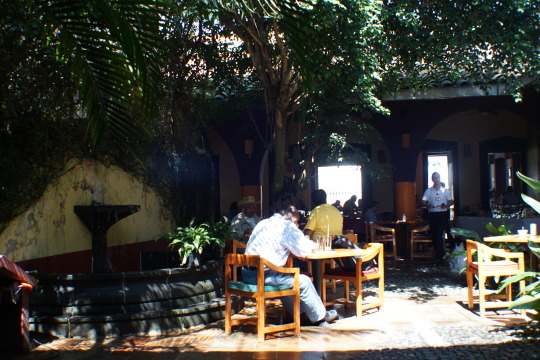
then stopped at the Regional Anthropological Museum which boasts the largest collection of Mesoamerican artifacts


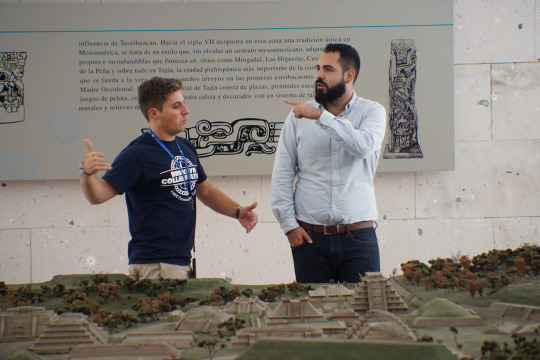
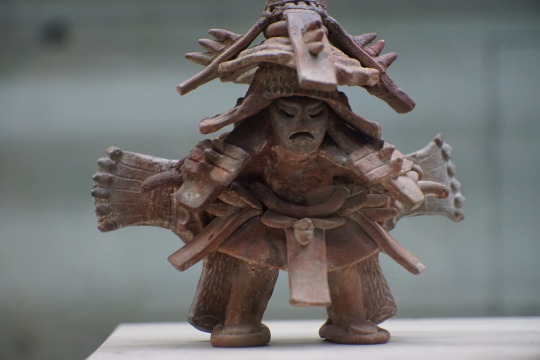

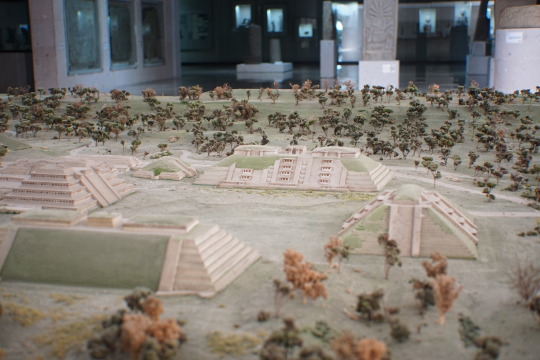
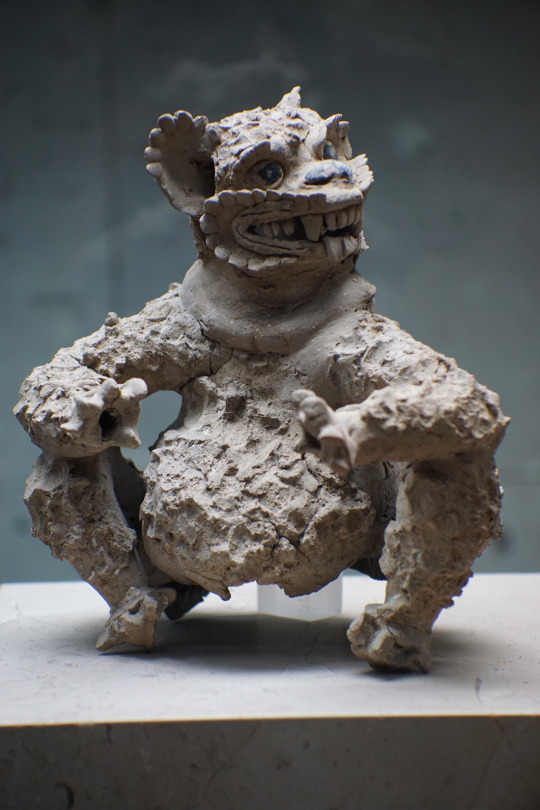
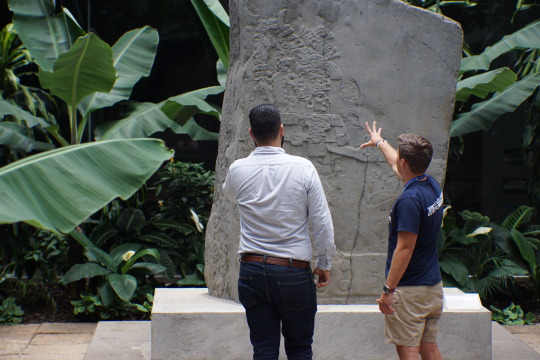
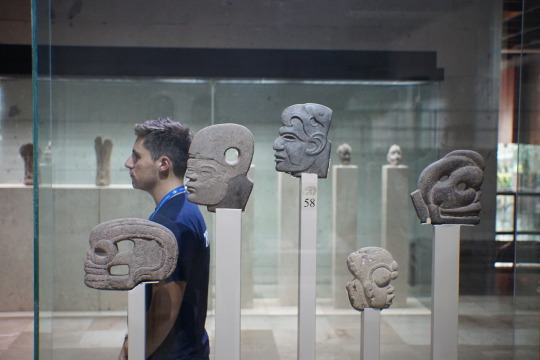



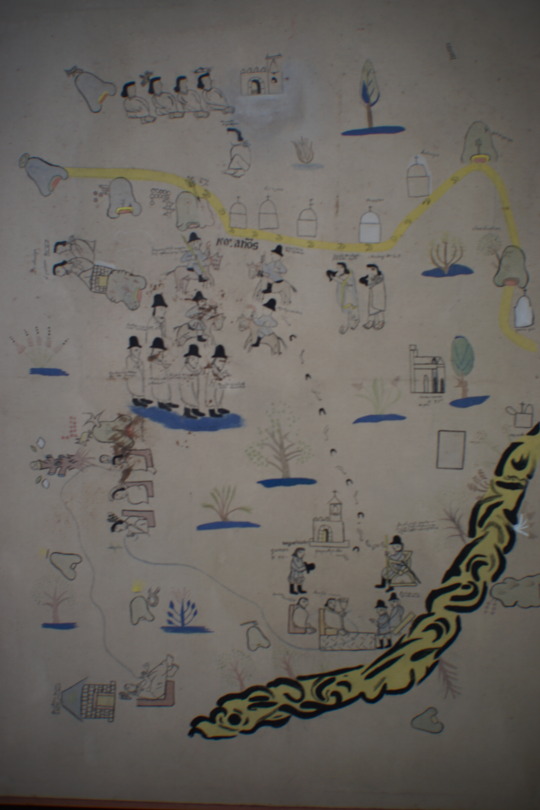
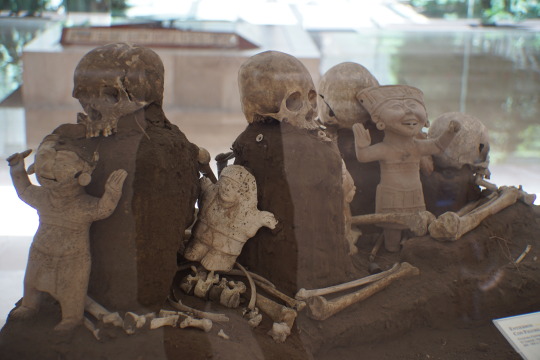
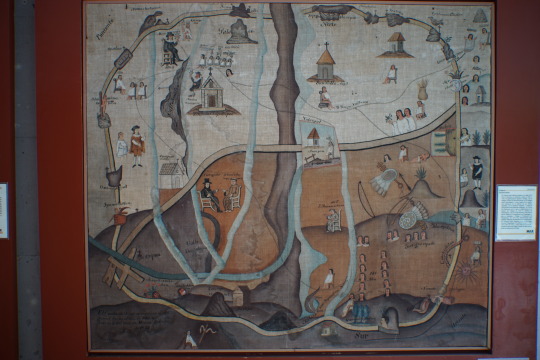
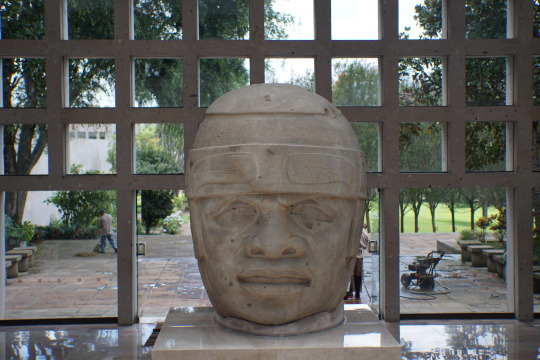
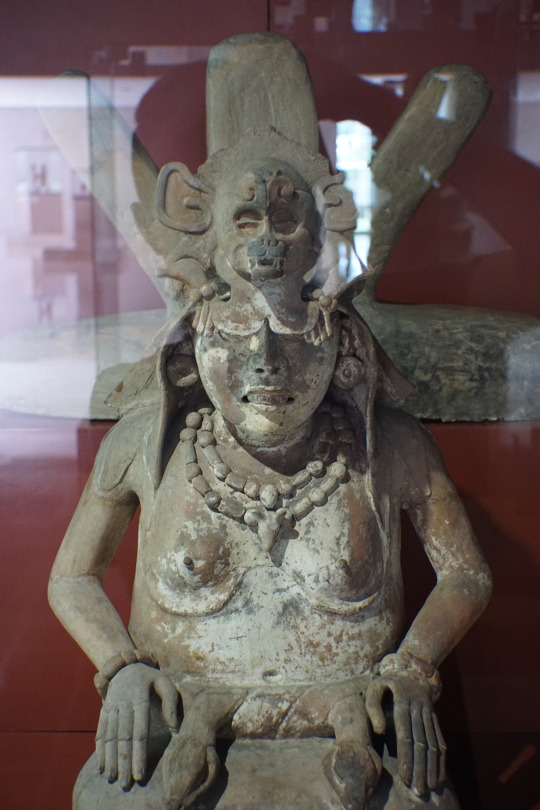


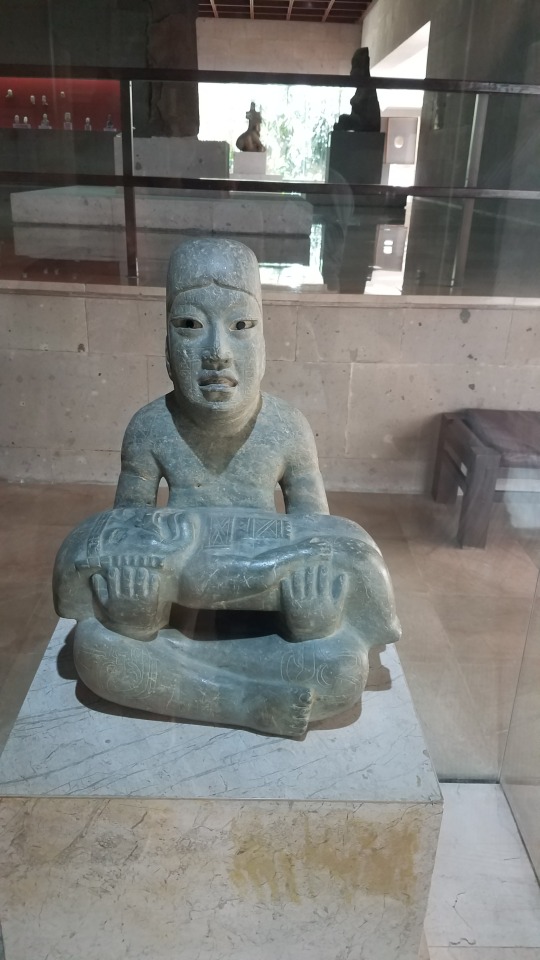
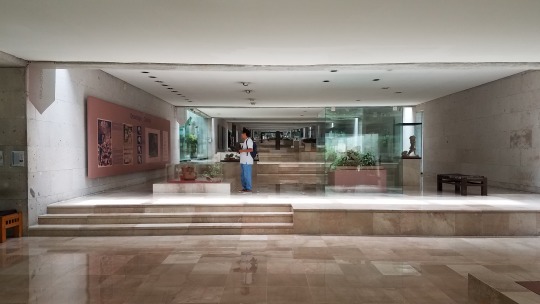
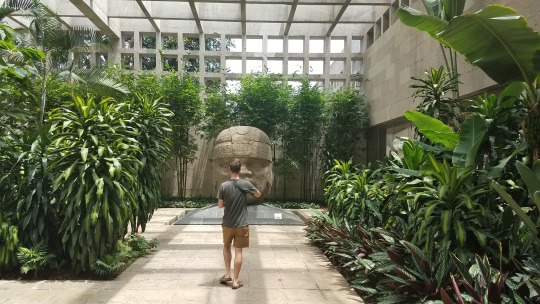

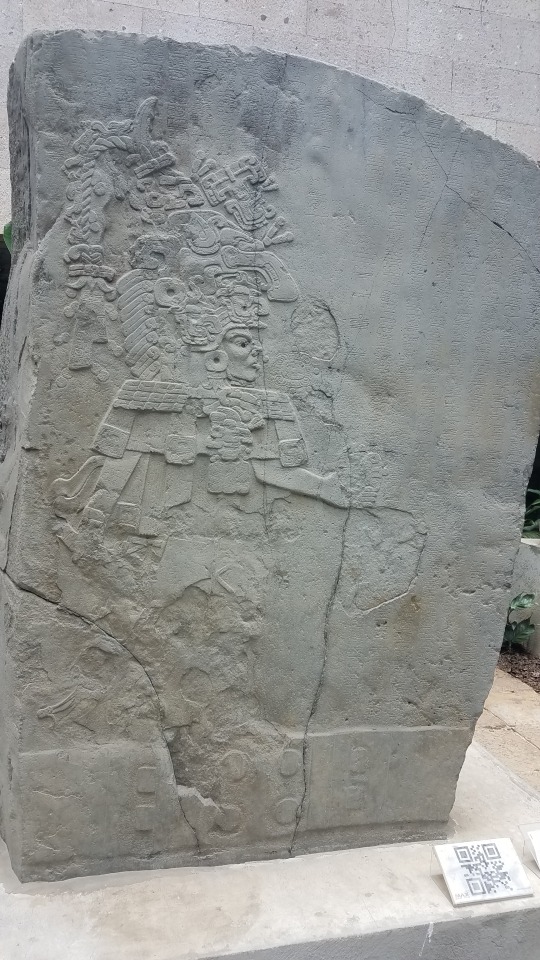
On our way out we bought some reading and visual resources to use back in our classroom with the kids!

As we drove away from Xalapa and towards Tlaxcala, we entered a mountain range where the lush green of the southeast was replaced by a more rocky and arid landscape. Strange desert trees dotted the craggy hills, giving the landscape an alien quality.

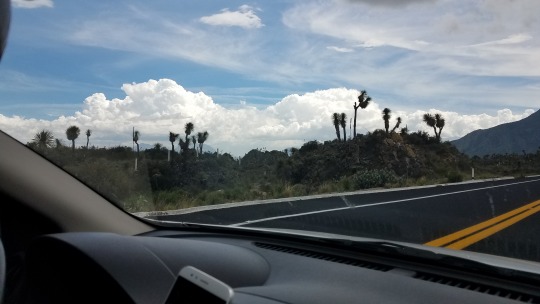
Up ahead, the volcano named La Malinche loomed nearer, and we saw signs inviting hikers to its daunting peak.
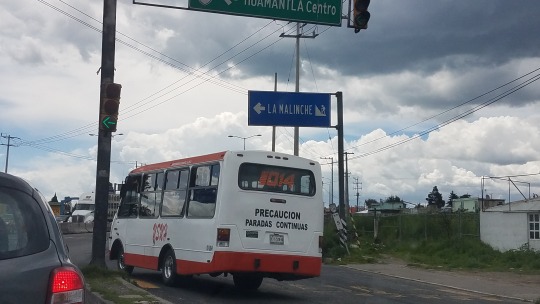
We arrived in Xalapa and put down our bags for our next overnight stay - a gorgeous country home that looked like it came from the 1500′s.


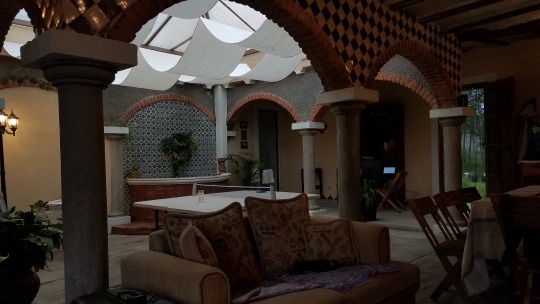
I asked the woman who handed over the keys about the city’s legacy in regards to the conquest. She paused. I asked her if Tlaxcala’s role in aiding the Spanish to overthrow the Aztec had some kind of significance to the people who live here. She took issue with my suggestion that the Tlaxcalans helped the Spanish, sharply replying “in a way” to this suggestion and ignoring the rest of the question.
Her response was intriguing. It was almost as if the suggestion that the Tlaxcalans helped the Spanish was offensive. It’s true of course. Cortes’ force numbered 500 at most. He made a peace offering with the powerful and militant city-state of Tlaxcala since the Aztec were their sworn enemies, and 3,000 Tlaxcalan warriors followed them into battle. So did my question seem to imply that her town had a history of treason? Who did they betray? The Aztec overlords who ruled through military dominance and fear? There’s a discomfort when talking about the conquest for many Mexicans, myself included. Whom do we identify with? We are a product of mestisaje (Native and Spanish), after all: children of the conquest for better or worse. We are a mixed people. Our culture is a melting pot of Spanish and Indigenous tradition. While the trauma of colonialism is still strong, many people reject colonialism and the Spanish conquest in the historical sense, pining for the ancient days of Aztec rule, but in their daily lives, Eurocentrism and whiteness is worshipped and indigenous voices and influences are cast aside.
This is a tangle of thorns nobody is equipped to unravel, so I won’t pretend to try, but it is interesting where this aspect intersects with our investigation of La Malinche.
Anyways... the house was amazing and we played a lot of ping pong, blasted Mariachi ballads and sang along at the top of our lungs
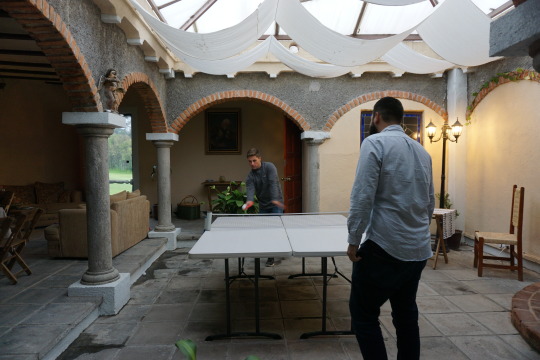
Then we head out into the center of town where the municipal palace wowed us with the most impressive mural I’ve ever seen. The mural showed snippets of the region’s history, from the first people cultivating the precursor to corn, Tlaxcala’s rocky history with the Aztecs, their eventual alliance and peace with the Spanish (as brokered by La Malinche) all the way to independence and the revolution.
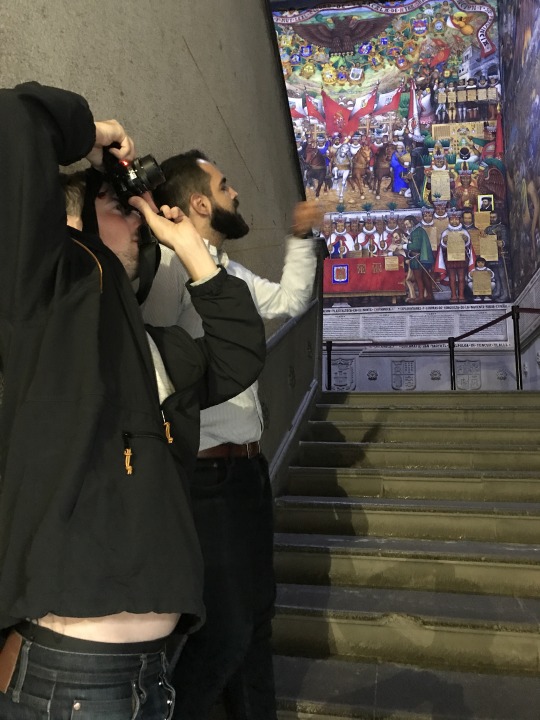
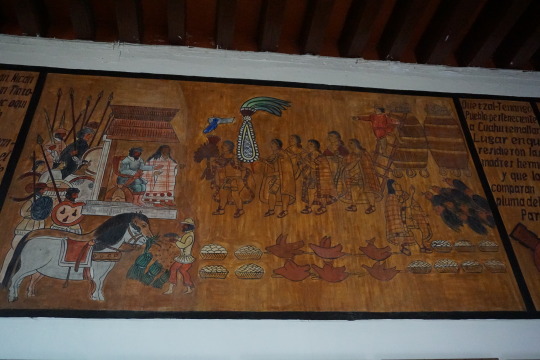
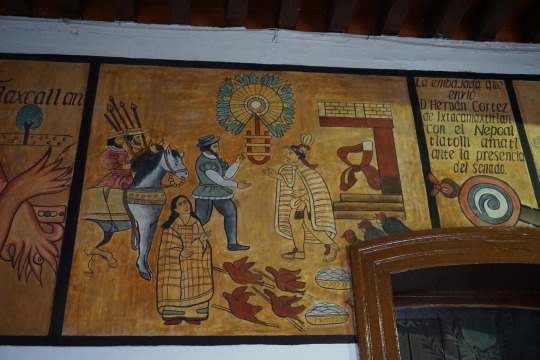

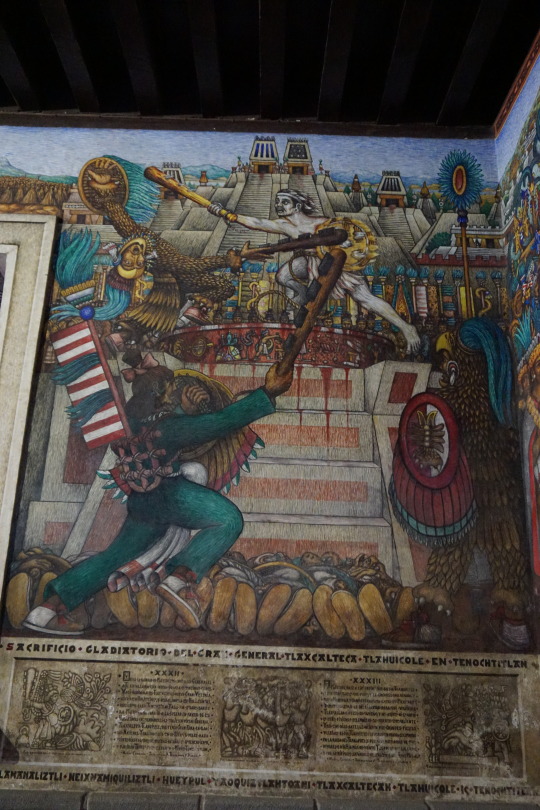




Tlaxcala is a unique place for a very significant reason. Since they were the most essential allies to the Spanish in taking down the Aztec empire, they were allowed to keep their sovereignty and its rulers were awarded the status of nobility. This meant more independence for the Tlaxcalans and more privileges than other native peoples. I thought that perhaps this would mean the locals would feel pride at this, but again, the muddiness of conquest politics makes in difficult.
After soaking in the mural and taking many pictures to use as visual sources in the classroom, we visited a pulqueria. Here we sampled some pulque, an alcoholic drink that goes back thousands of years made from fermented agave pulp. It had a slimy viscosity that puts many off, but I enjoyed it overall. To accompany it, we had some bugs that like to call the plant home: escamoles (ant larvae and pupae made with butter, minty herbs, and chiles), and fried maguey worms that were served with grilled panela cheese, guacamole, green and red salsas, and fresh corn tortillas. Roberto and I made quick work of these pricey delicacies. Glen and Greg had some, were satisfied, and were gracious enough to let us eat the rest.

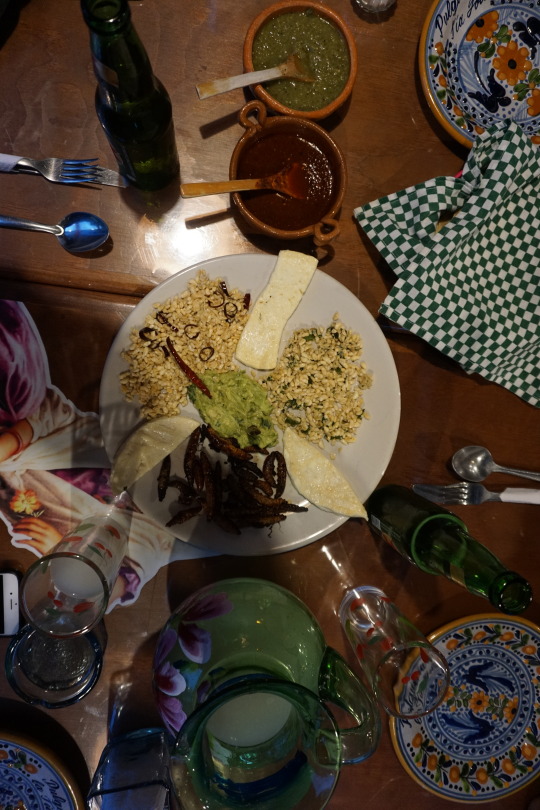

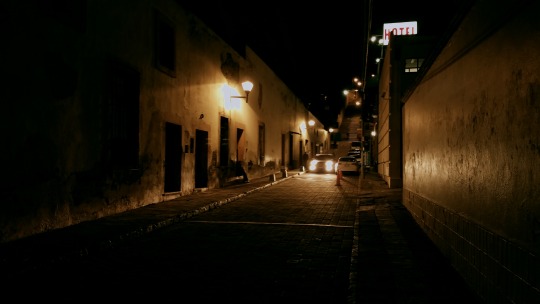
We ended the night at a mezcaleria in a winding alleyway where we sampled some of their wares. Mezcal is a popular drink in the south made by wrapping and smoking maguey pulp, often with fruits, herbs, or nuts, then letting it ferment. It has a smokey flavor that pairs well with worm salt (exactly what you think it is) and orange slices.


HARDSTYLE

We drove back to the country home and were startled when the groundkeeper suddenly appeared in the doorway when he heard us come in, asking if all was well. Greg was convinced it was the start of a slasher flick, but we woke up with all our blood and limbs.
It’s a good thing too, because before we went to bed we challenged ourselves to climb to the top of La Malinche volcano early in the morning.
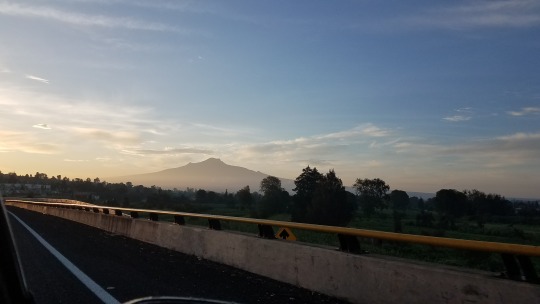
6 notes
·
View notes
Text
Day 10 -The Best Damn Barbacoa
We woke up and left D.F. at 4:40am to get to San Miguel de Allende in the morning.

On our way, Roberto recommended a barbacoa spot called Barbacoa de Santiago on the side of the highway We got there around 6am and were surprised to find that it was in full operation with people pouring in as we ate.
And I can understand why.
It was the best damn barbacoa I’ve ever had.
This particular barbacoa was lamb, and it was made in deep pits in the ground where it cooks slowly in its own juices.
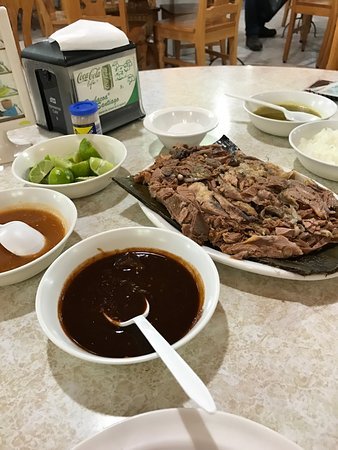

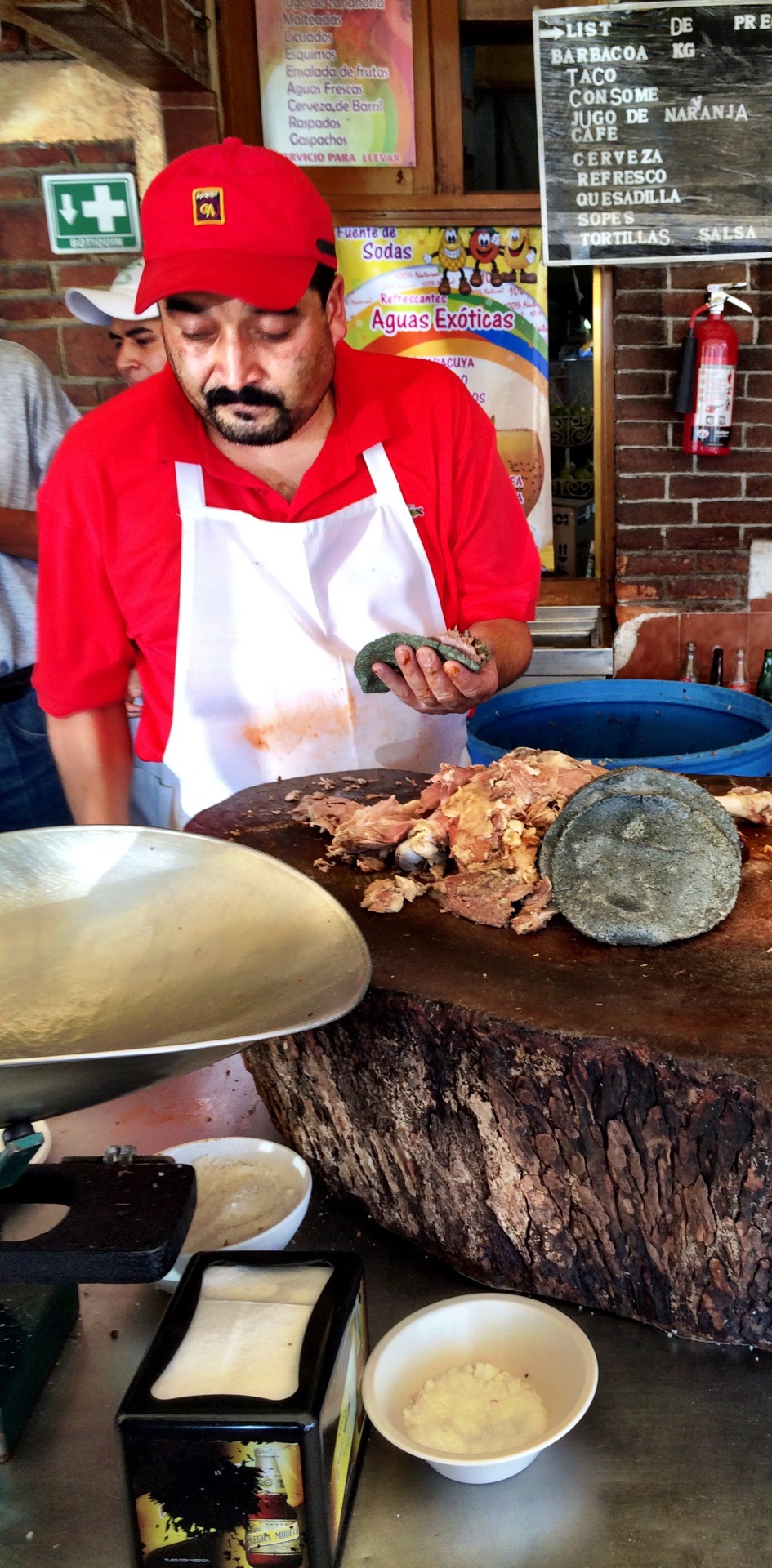

(pics courtesy of http://www.kesandelta.com/2014/05/18/barbacoa-santiago-best-tacos-in-mexico/ and http://goodfoodmexico.com/backyard-bbq-touring-the-worlds-best-venue-for-barbacoa/
We had some stellar cafe de olla to go with it, and we were ready to start our day. Our drive to San Miguel de Allende gave us some amazing mountainscapes.

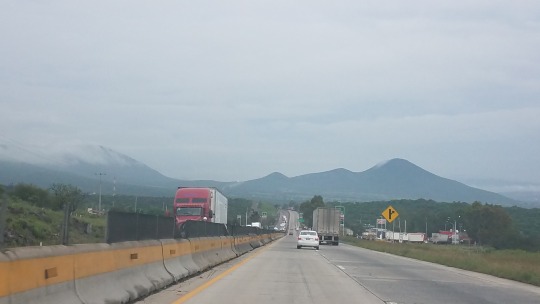
We navigated the mountainous and narrow streets of beautiful San Miguel, and arrived at our airbnb tower. Yes, tower.
(these pics courtesy of AirBnb)
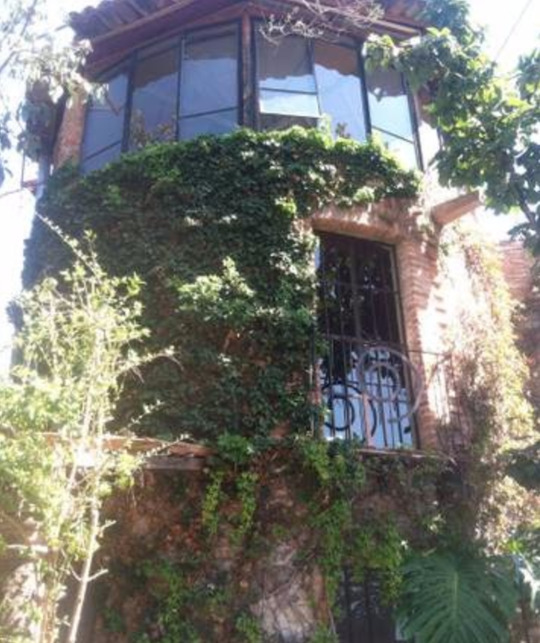






And this one is courtesy of me.

Mexico City was our last stop in following the path of La Malinche. Other than a few treks south after the fall of Tenochtitlan, Mexico City, the capital of New Spain, was where she married Juan Jaramillo, a Spanish hidalgo, had a daughter named Maria with him, and would live her final days until dying young, most likely due to illness.
The plan for these two days is to visit San Miguel de Allende and Guanajuato, two beautiful preserved colonial cities in Mexico that would give us a glimpse at Mexico in the colonial period following the conquest, and where we could take time to compile our findings, catch our breath, and to rest.

Lots of rest.
Glen hung up some rope and we took this time to do all of our laundry.
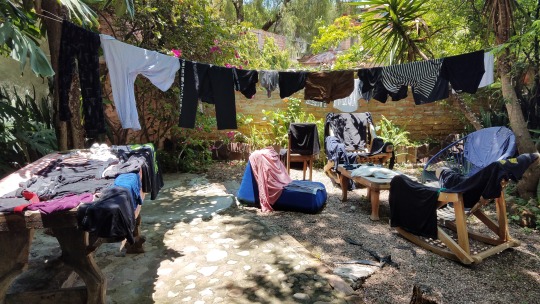
Here are some pictures of this picturesque town I took in between bursts of rest, and productivity.

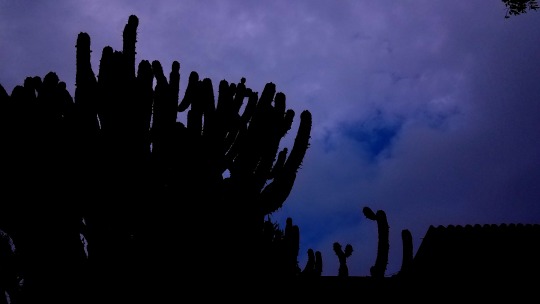




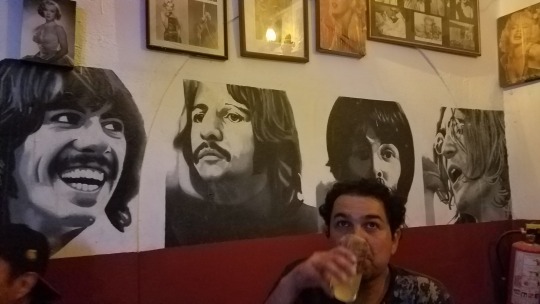






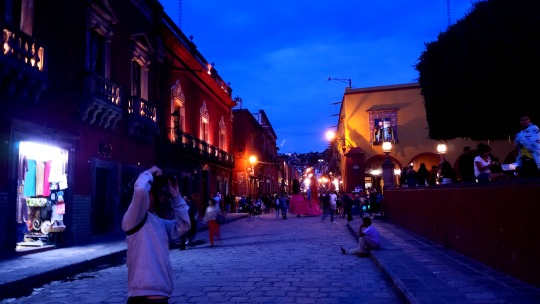










We got back to the tower, our home for the night, and I was very dismayed to see that our clothes were all still damp.
This is what we get for procrastinating
2 notes
·
View notes
Text
Day 9 - Research Using Beans
We woke up and decided we needed more tostadas. So we set out to the Coyocan market once more to eat, buy supplies for today’s research, and check out some of the other shops.
We saw some exquisitely crafted alebrijes, a Mexican style of art that goes back to prehispanic. Making these little creatures involves creating animal chimeras with and painting them with vivid colors.


After that, a woman selling fruits saw Glen and I staring curiously at some fruits we’d never seen before and stopped us. She cracked jokes and fed us large quantities of fruits we hadn’t tried, as soon as we’d finished one type she was slicing into a new fruit and giving us samples. We bought a mamey, an ataulfo mango, and a fruit whose name I forget but was intensely soft, sweet, round, and was one of the fruits that the Nahua people of this valley enjoyed.


She charged 90 pesos for the three pieces fruit, definitely overcharging, but we had such a good time chatting with her and having her show us around that we were happy to pay the turistas pendejos tax.
We reminded each other to ALWAYS ask for the price of something before we get it.
Then we drove to UNAM: “The National Autonomous University of Mexico (Spanish: Universidad Nacional Autónoma de México, abbreviated as UNAM) [which] was founded in 1551, making it the oldest in North America. It is the largest university in Latin America and was ranked the best in Latin America, Spain and Portugal, and 95 in the world according to a study conducted by The Times and released in 2005,” (www.topuniversities.com)
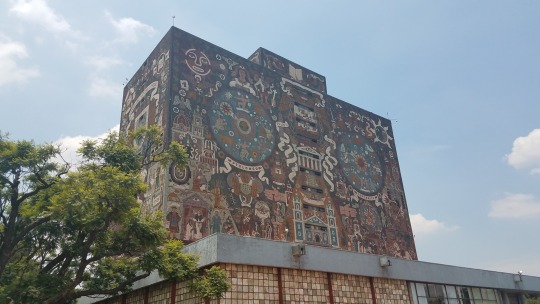
We decided that students here would probably have a better grasp of the historical La Malinche than the average person on the street we interviewed.
Our objective was simple: in the classroom, students have to decide whether La Malinche should be remembered as a hero, victim, or traitor.
While this question is not terribly nuanced, is rather reductive, and can be answered in many different ways looking at many different contexts, it’s a question that 7th grade students were able to latch onto.
It allowed them to judge her as a person and it forced them to understand the historical context she lived in for them to decide how her legacy should be seen.
So we made three baskets, put out a bowl of dry beans, and asked passersby to vote by placing the bean in the corresponding basket (hero, victim, or traitor). Many people stopped to talk with us, to give interviews, or simply to ask us questions.


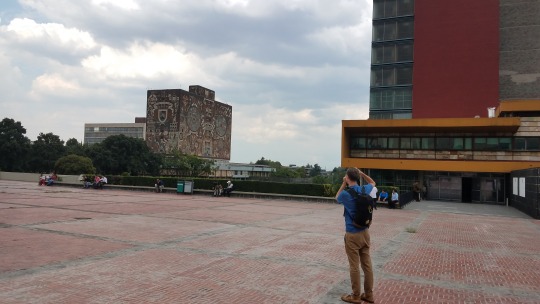
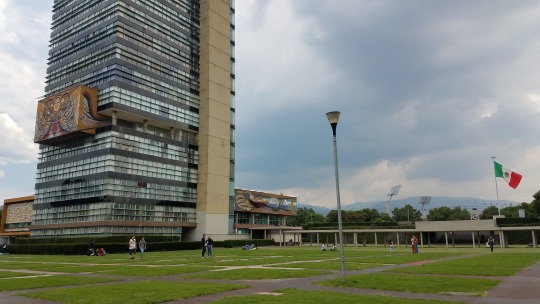
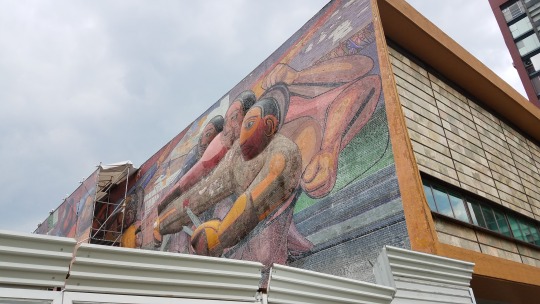
The results:
Hero: 14
Victim: 55
Traitor: 18
We got very interesting perspectives, but most people asserted the fact that her being a slave, and a woman, someone who was an object and property, was the strongest factor in considering her actions.
Many people also scoffed at her being a traitor. “A traitor to whom? The Aztec, the people she hated? Mexico didn’t exist yet!”
They echoed one of out learning objectives. Although she’s been seen as a traitor for a long time for helping the Spanish, we want our students to understand what it means to be a traitor then question who exactly she was betraying by helping the Spanish forge allies against the Aztec and translating for Cortes.
One woman commented on how that the strongest bonds and alliances we have are to our family, if she had a child with Cortes, why wouldn’t she be invested in protecting their success? Did this make her more aligned with the interests of the Spanish than that of the natives she lived and worked for?
What struck Glen and I the most, however, was long people stopped and thought before casting their vote, and the group think that came with it.
Often, a whole group would stop and ponder the question for minutes, before the first person placed a bean. More often than not it went in the “victim” basket and more often than not, the rest of the group followed suit, casting their vote for victim as well. Glen and I wondered if the victim vote was the safest. After all, calling someone a hero or traitor is a personal and subjective judgement. It’s taking a side. Maybe it’s easier to defer to the trauma and limitations La Malinche’s oppression rather than ascribe value to her enormously significant actions.
After spending hours there talking to people and counting the beans, we head back to Coyoacan to see the Frida Kahlo house and museum. We were very glad we bought a ticket ahead of time for a time slot since the line to enter wrapped around the block.
I guess Frida Kahlo is synonymous with Mexican culture nowadays, and it’s not a stretch to call her the most important icon of Mexican culture and history to the rest of the world, so the lines weren’t all that surprising.
It was masterfully curated, and we got to see her wardrobe that was hidden away until recently. It also showed their house as it was, preserving the original artwork, kitchenware, personal affects, and furniture.
It was an intimate look at the life of an artists I admire greatly.




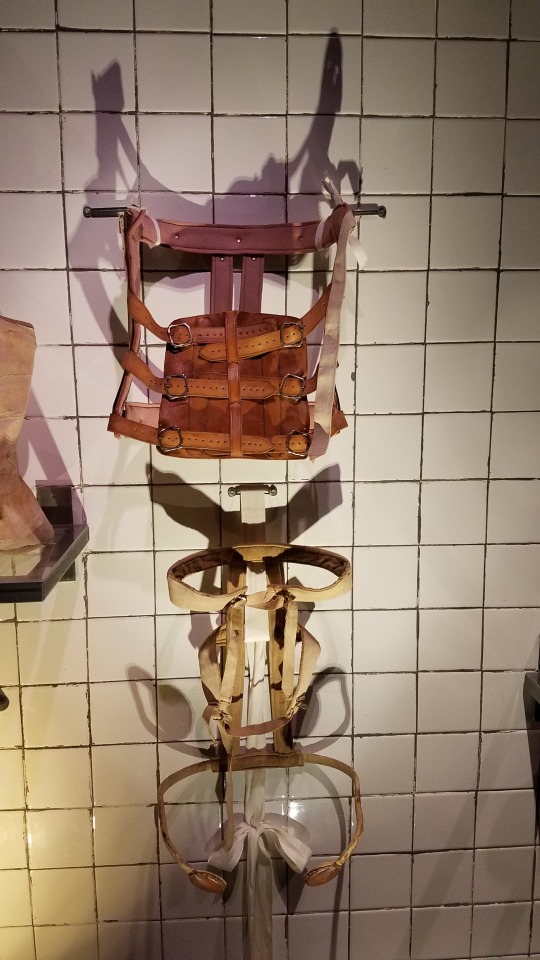


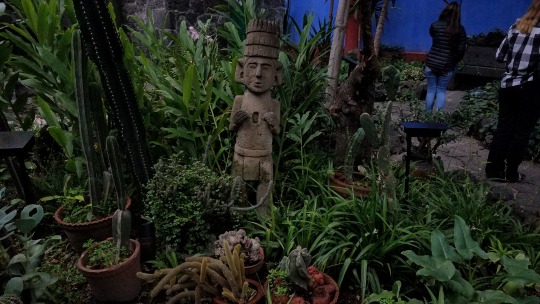
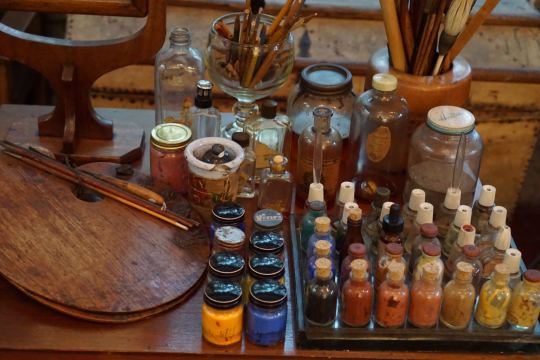







After that we saw yet another store that had La Malinche’s name!

We stopped by for some sangria soda, then we went to la Casa de los Tacos, a place Glen and I had been very excited about visiting.
They have delicious from scratch tacos, including a bunch of prehispanic tacos (mostly bugs and veggies) but also boar and veal, which were exquisite.
Here are the baja style fish tacos we started with. The ones wrapped in banana leaves were the boar tacos which were my favorites. They were served with a side of sweet caramelized chipole in a balsamic style brine. I ended up putting this on all the tacos and regretted nothing!

The food was so damn good I forgot to document the rest for y’all, but here are some pics I found on the internet, enjoy!
(Pics courtesy of TripAdvisor.com)





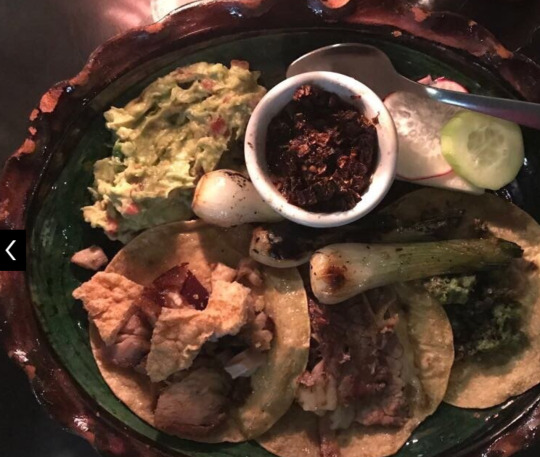

I still dream of those tacos...
#coyoacan#fft#fftmexico#lamalinche#malinche#malinalli#malintzin#mexicodf#mexicocity#casafridakahlo#museofridakahlo#casadelostacos#casadelostacoscoyoacan#unam
3 notes
·
View notes
Text
Day 8 - Markets, Museums, and Murals
Once again, Cafe Jarocho to start the day, and then we drove to the historical center of Mexico City. Finding parking was easy enough, then we went to a very recommended taco spot for some suadero tacos.

Suadero is a very tender cut of meat taken from between the inner rear leg and the belly of the cow. The place was small, the people were kind, and we ate as if we were in trance. I ordered another one without any other toppings or salsa just so I could taste the meat.
The taquero whipped out a boneless cow head (I don’t know how the skull had been so expertly removed while keeping the rest of the head in tact, but then again, I’m no butcher). He showed us all the different types of “meat��� and their names from all over the head. Every part was used and eaten and cooked in different ways. He even sliced up the giant eyeball like an orange to steam it properly.


After finishing up, we walked to the famous Cafe Tacuba a place that used to be popular with artists, pachucos, and other socialites. One of the biggest bands from Mexico City take their name from this place and we had to check it out.

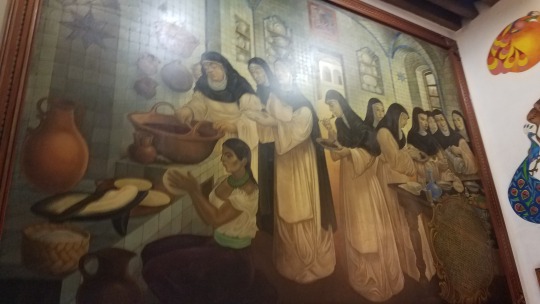
It was a short walk from there the historic center of the town.

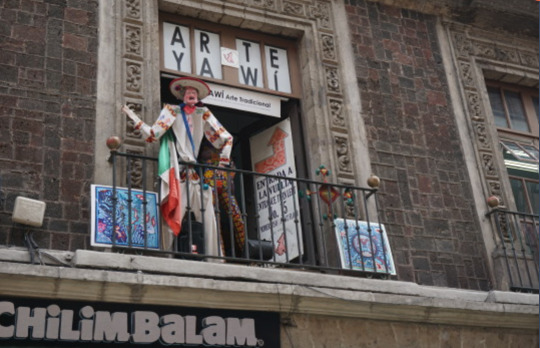

Where the old church loomed...
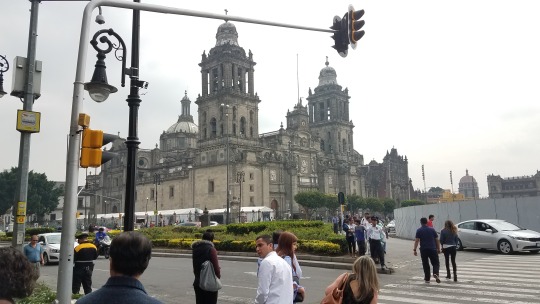
And where this monument greeted us

It reads:
“Cuahotemoc. He was the last Mexica (Aztec) tlatoani (ruler) and his name means ‘Eagle who falls.’ He distinguished himself as a military leader of the resistance [against the Spanish]
The courage, stoicism, and dignity of the last Aztec Emperor is an example of heroism for all Mexicans.”
I stopped to digest this for a while. This monument seemed to suggest that in so far as the cultural imagination, the Mexican people had sided with the Aztecs when it comes to the history of their fall at the hands of the Spanish and the native groups they banded together to help defeat them.
This, and other experiences, have led me to believe that when it comes to the conquest, Mexico hold up the mirror, and sees themselves as the Aztec. This is a gross simplification of history, in my eyes, since before Mexico was Mexico, these lands were home to a number of great and diverse peoples, cities, alliances and empires, many of whom were at war and would have seen themselves as different from one another as we see the Spanish and the Aztec.
At the time of the arrival of Cortes and La Malinche’s role in history, if you would have asked the people who populated the lands we now call Mexico, it wouldn’t be hard to believe that a majority would call the Aztec the enemy. An oppressive empire that used fear, religion, and power to expand their political boundaries. Perhaps they are more similar in this way to the Spanish than we realize.
History is written by the victors, but over time, the victors change. The history of savage lands being tamed that the Spanish had written for the exactly 300 years of colonial rule had changed as independence and then revolution shook the nation to the core and changed the national social imagination.
Today, the Aztec are held up as tragic heroes who died preserving a noble way of life against ruthless invaders, but looking around at a country that is always burying indigenous voices and ignoring indigenous needs, these two concepts appear to be at odds.
The Mexican government likes to admire indigenous heroes in history, but seems to do little to treat indigenous people with the dignity that this should warrant.
...aaaand speaking of erasure, remember this big beautiful looming church?

It was built from the bricks of the destroyed Aztec temples in the central ceremonial plaza of the city. These previous pictures show later additions to the church, but this part the church is original

We snapped this view later as we left the Templo Mayor museum: the ruins of the temple complex of the old Aztec capital that Mexico City was unceremoniously built on top of. It’s also a currently active archeological site. In this picture, the stone of the old church seems to blend in with the stone from the old temples, and it’s because the stone is one and the same.

Here are more shots from the inside:




There was a mass happening in the smaller original church seen here. Even though Mexico seemed to pick the Aztec to side with during the conquest, they sure didn’t pick their gods.

But I spoke to soon! Even though we never saw anybody actively worshipping any of the old gods, there were a group of Aztec healers doing a ceremonial ritual by the church and cleansing people who lined up and paid a small donation. In fact, much of the old rituals, traditions, and stories survived, fused with Catholic culture, and created a new mixed set of beliefs and practices. This was also common in other parts of Latin America and the Caribbean where natives fused their older Mesoamerican or western-African beliefs with Catholicism to give us traditions like Voodoo and Santeria.
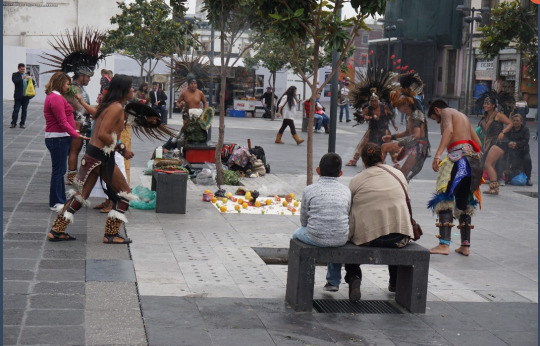



Right around the corner was the Templo Mayor Museum, a museum that showcases the discovery of beautifully preserved Aztec relics that were found during several excavations around the city. Since Mexico City was build on top of the ruins of the Aztec capital, several construction projects and excavations yielded the uncovering of many of these sites.
The lobby had a great exhibit on recoloring the artifacts. Aztec pyramids and artwork used to be painted with resplendent colors they extracted from a wealth of minerals, flora, and fauna. Many buried figures still kept their hue, while others were analyzed using spectroscopy and recreated with their original intended colors before they faded.
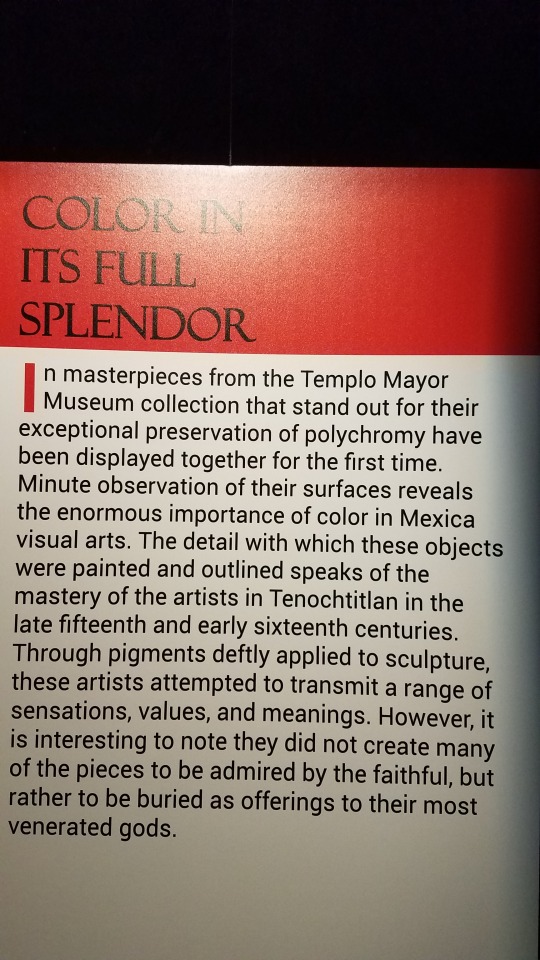


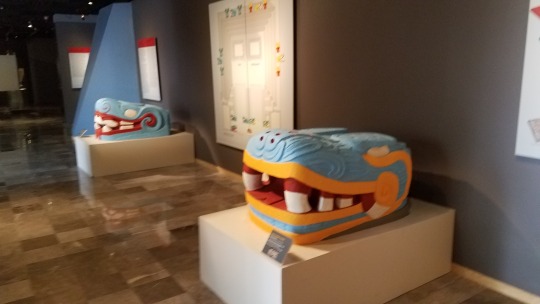

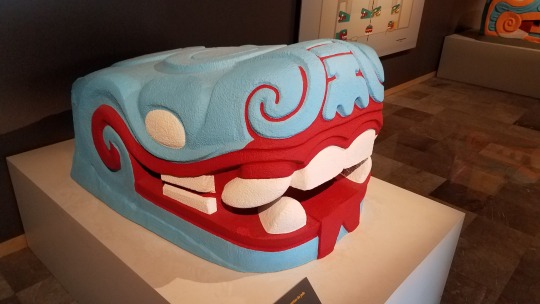
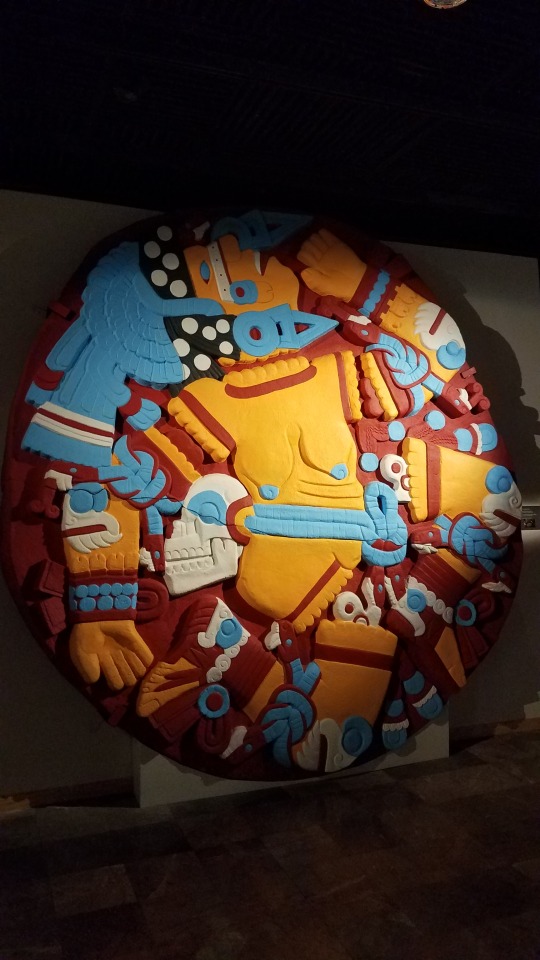


The museum was beautifully laid out and showed the history of the Aztec capital in detail.
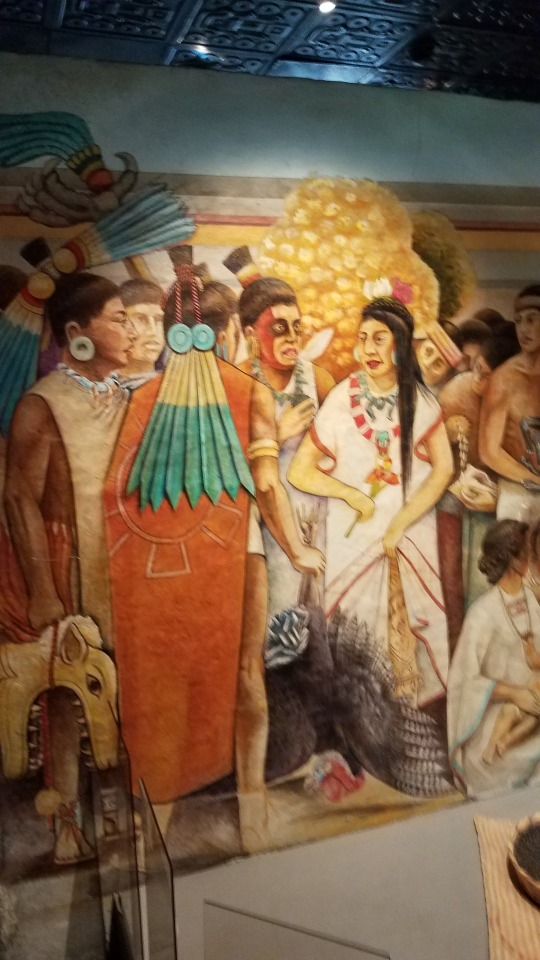
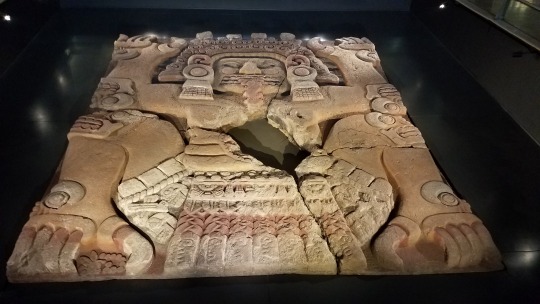



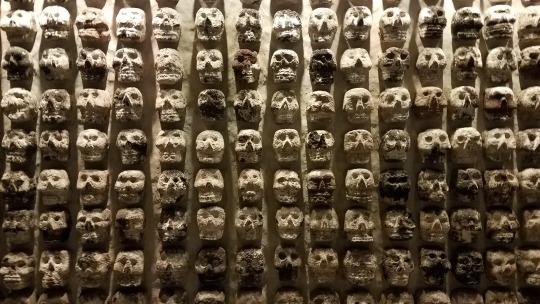
Here’s the god of death! Missing is his thick head of curly hair which would have been added to the statue and did not preserve.

Right outside the museum are the ruins of the temple complex of Tenochtitlan. We walked through catwalks and saw what was left of the massive ceremonial sites and pyramids.

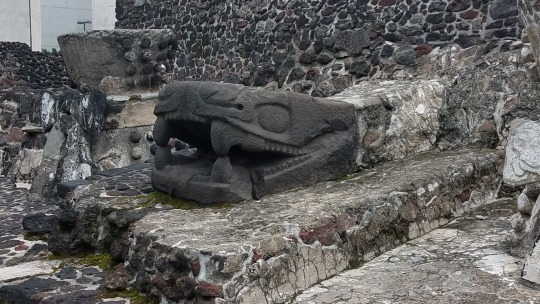
This is what this plaza once looked like (courtesy of the National Anthropological museum)

We explored some staggeringly enormous street markets which, to my immense amusement, included puppies!
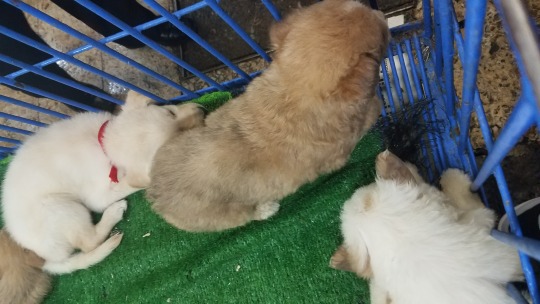
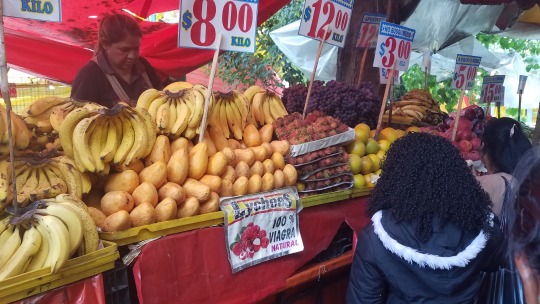

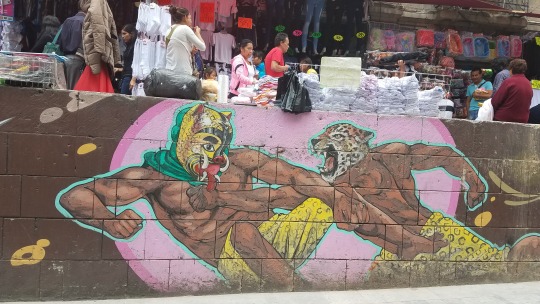
I checked out a fear museum which was curated and created by a local university while Glen and Roberto sipped some coffee. It was a guided tour of fear from the beginning of mankind and our mythology, to modern urban legends and why fear manifests itself in these different forms.
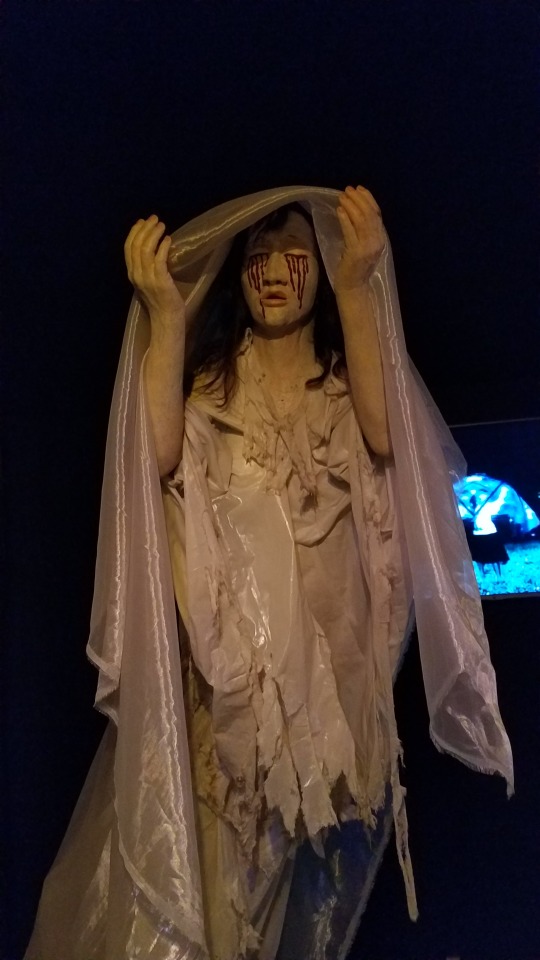



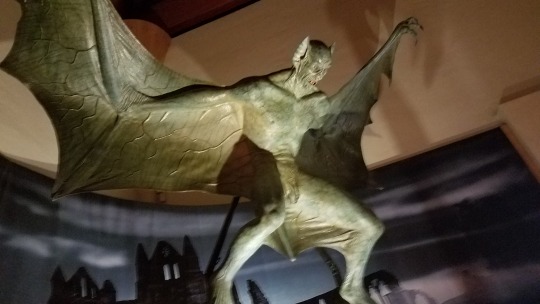
We stumbled upon the first printing press in the Americas.
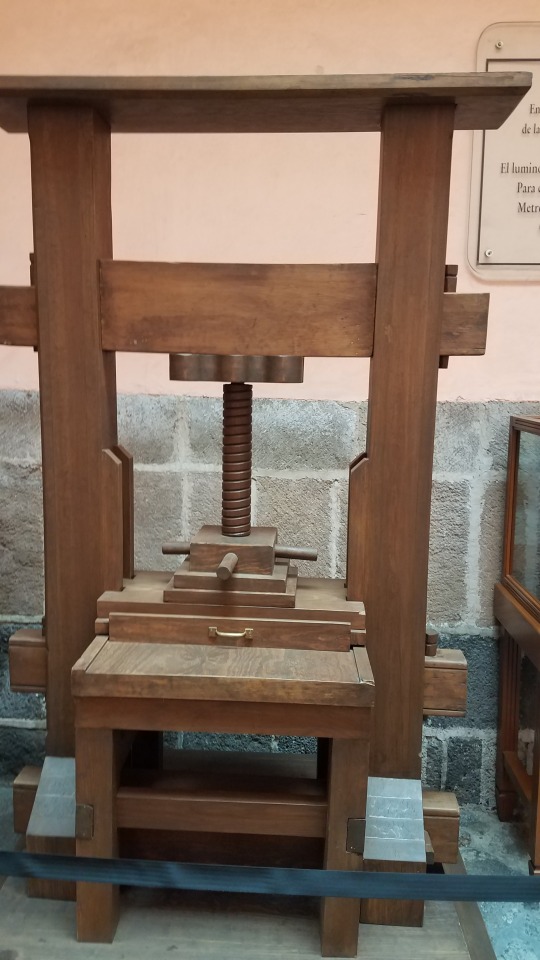

(seriously, you could trip here and fall face first in history any where you fell)
Then we went to the National Government palace (the Mexican version of the White House). After getting through security, we checked out some gorgeous murals by Diego Rivera that showed the entire history of Mexico up until the 1960′s.
It depicts the events of the conquest that happened in Tenochtitlan. Events that happened here, now Mexico city, then the capital of the mighty Aztec empire: a series of man-made islands on lake Texcoco with a population that exceeded that of any other city of the day.
Here, La Malinche stood face to face with Emperor Moctezuma, behind her, a coalition of natives who were fed up with their rule and a collection of strangers from afar. Cortes and Moctezuma spoke to and through her. She heard them, she considered the words in her head carefully, and then translated.
I wonder what was said, if she changed anything on purpose, and how she must have felt coming face to face with the leader of an empire she most likely once feared, and most likely then detested.
And I wonder if Moctezuma felt fear at seeing her, and knowing the fate of an empire was in the hands of a translator and former slave.




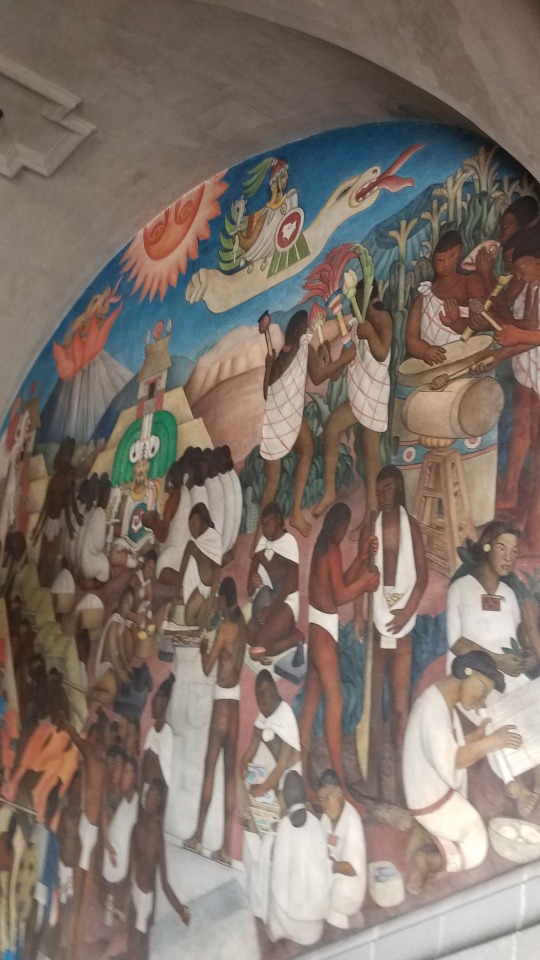

We ate at the historic Mirador Chapultepec cantina, a place that still has salons separated by gender. After that, we raced through the National Anthropological Museum before they closed.

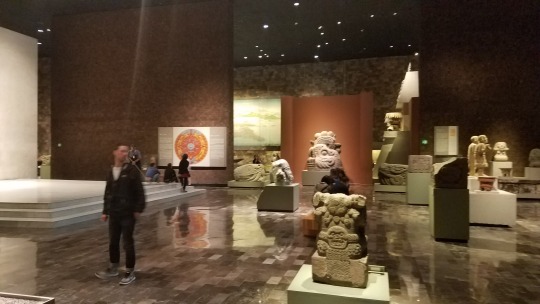
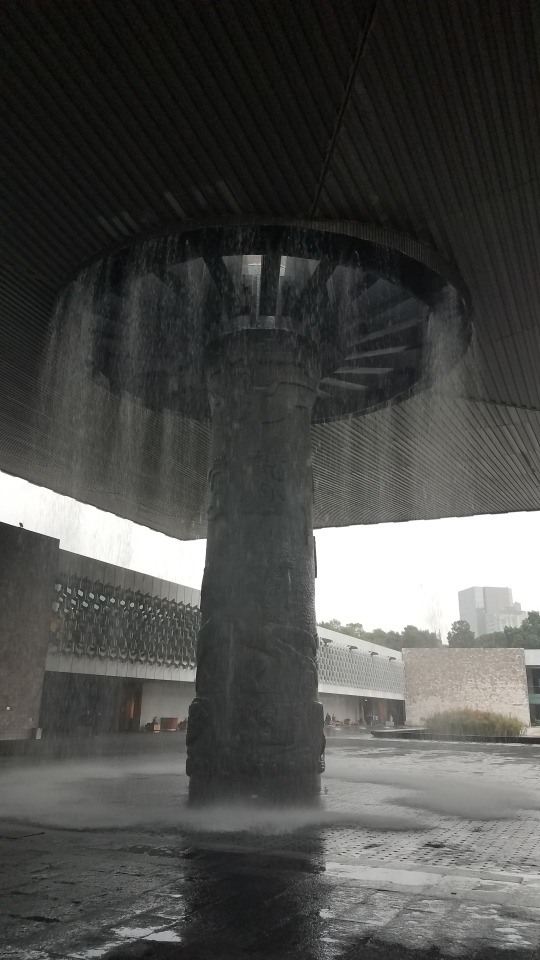
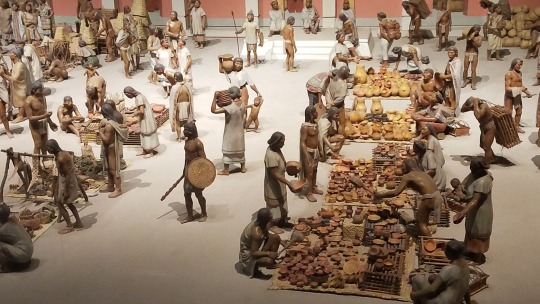


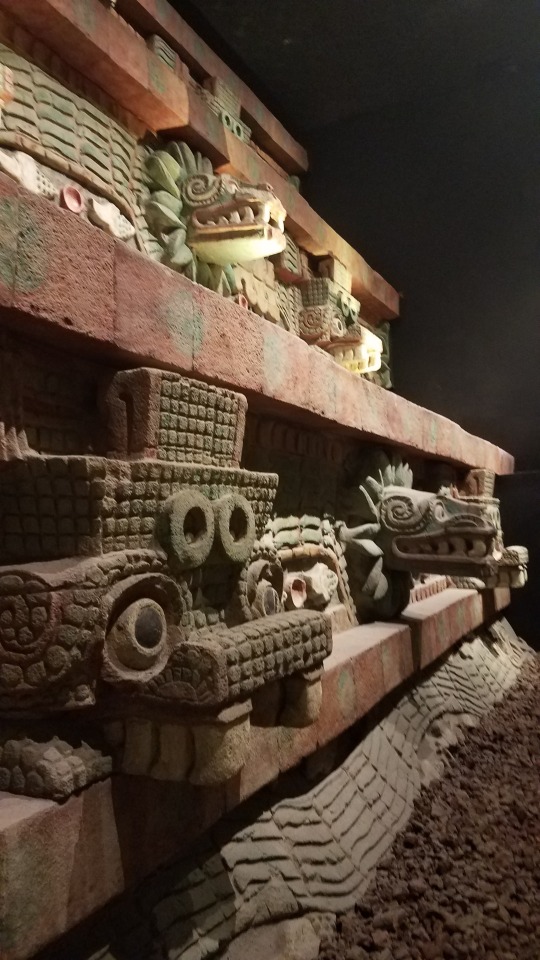

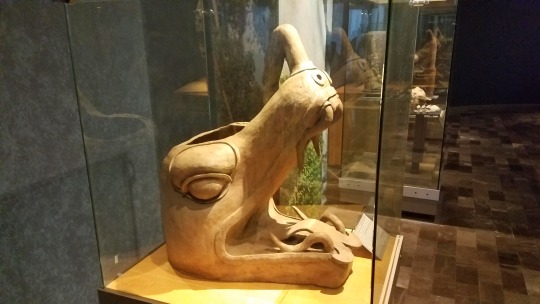


We ended the night by meeting up with Stephen, a colleague of ours from Brooklyn, and his wife. We sampled Mezcal at a trendy bar in Condesa and talked about how to best spend the rest of our time here.
There’s just too much history, and not enough time to see it all.
3 notes
·
View notes
Text
Day 3 - Nuestro Mejor Amigo Chucho
First stop: drive through at a Gran Cafe La Parroquia, a popular local coffee chain in Veracruz that goes back to 1808 when the first cafe of its kind opened. Cafe Glen is better, but we were in a hurry so Glen and his AeroPress got a break that morning.
Our first stop of the day was to check out the San Juan de Ulua fort at the mouth of the port of Veracruz, an unbelievably rich port that used to be called the mouth of the Americas since most goods going in and out of the Americas had to pass through there under Spanish rule.
We drove through the beautiful historic center where a solitary stone fort stood in the middle of a town plaza surrounded by colonial churches, palaces, and brightly painted town squares. As we followed the path to the fort, the colonial charm gave way to a sprawling industrial port where enormous cranes, factories, and shipyards dominated the landscape. We thought the address was wrong, but sure enough the signs pointed forward through barbed wire checkpoints, naval armories and training grounds, and labyrinths of shipping containers piled high.
We arrived at the fort and as if on cue, the rain began. The fort was massive: a series of imposing fortresses and prisons connected by bridges and walkways, looking over the entry to the port. The size of the fort was not surprising when we learned the importance of the port and kinds of battles it had lived through. What was most shocking, was the materials used to build it. Enormous chunks of seashells and coral were embedded into the stone and concrete, as the Spanish used these in a mixture in addition to rocks, stones, and concrete to build San Juan de Ulua. Pockmarks and holes in the fortress’ exterior revealed scars from past battles.


The rain came down as we wandered the damp tunnels, torture chambers, and plazas where the military once marched and executed countless enemies. It was easy to imagine the dread prisoners once felt as crossed through the fort’s threshold, an archway known as the “puente del ultimo suspiro” or the “bridge of last breath” as prisoners who passed beneath though the dark stone tunnel knew they last breath was at hand. What awaited them at the other side was either death, if they were lucky, or maddening torture.

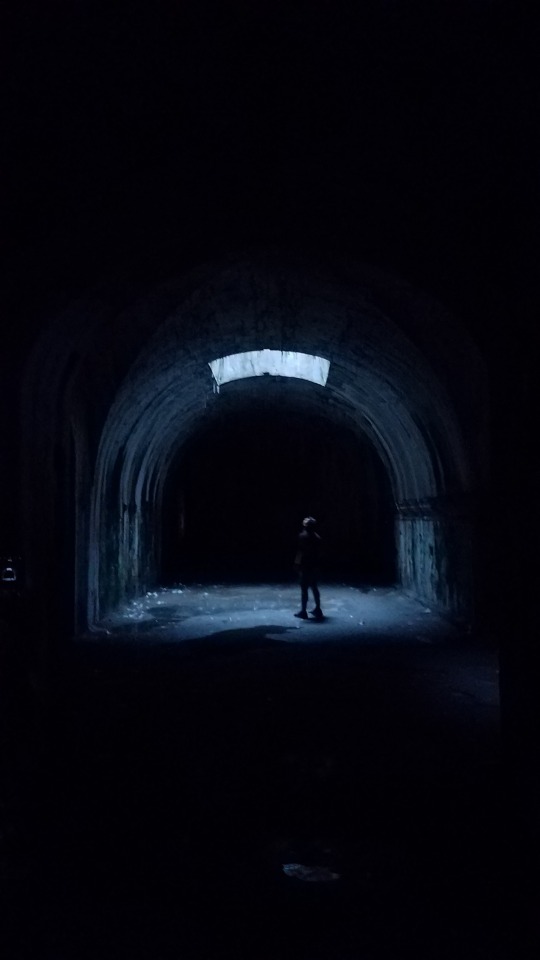
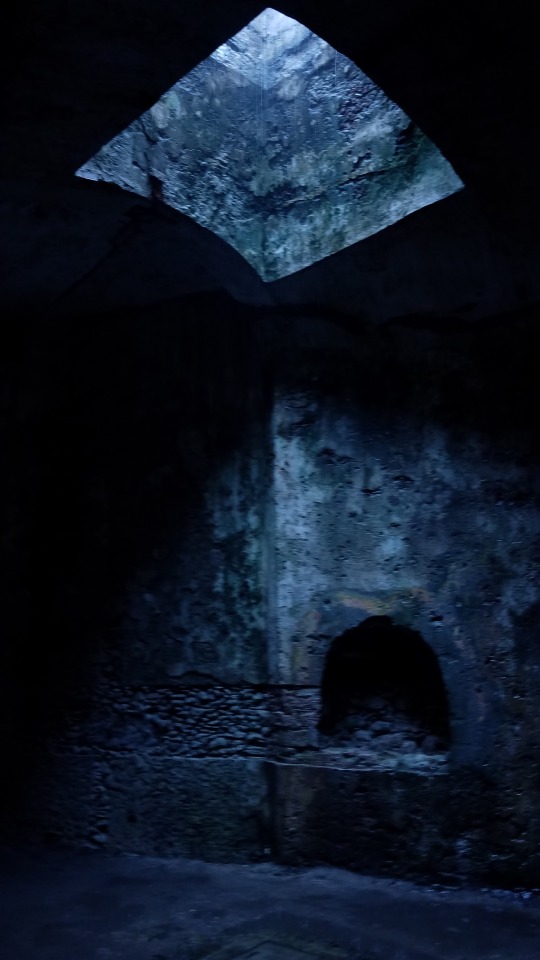



We cut inland after this, en route to Xalapa, our next stop. On our way there, we stopped at La Antigua, a small riverside town recommended to us by locals where it was said Cortes and his men disembarked on their way to the Aztec capital, and where one could find Cortes’ first house.
We raised our eyebrows since our knowledge of Cortes’ journey didn’t have him building or living in a permanent settlement outside of the capital, after the Atec were defeated, but we decided to check it out.
Some winding roads took us to the center of a very old, very charming town. As soon as we got out of the car and walked towards the main plaza a small boy who introduced himself as Chucho walked up to us with an unbelievable amount of confidence and charisma for his size. He offered to give us a tour of the ruins of the “Casa Cortes” for a small donation of our choice. We accepted and he led us through the ruins, weaving the history of the town and the house expertly and taking questions left and right.
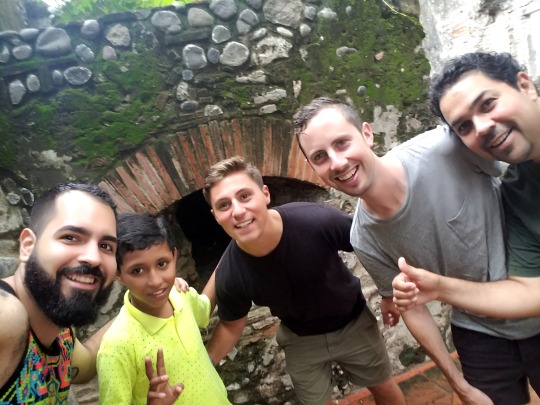




Turns out, the stories of this being Cortes’ house were pure bull. He said that locals peddled the story to get more tourists, but that it DID belong to a Spanish noble and it DID have its own torture chamber and smelting oven to make cannonballs and swords. Afterwards he took us to a beautiful restaurant with a great view of the river where we ate seafood and listened to a marimba band belt out some classics.
We interviewed one of the marimba players after eating, asking him about La Mlainche. He said that around these parts, La Malinche was name met with fear. People here have seen La Malinche, he said, wandering the riverbanks. She wears a black veil and weeps. If you’re even a little bit familiar with the story of La Llorona this should sound familiar. In fact, the story of La Llorona, a grisly cautionary tale that advised against the mixing of social classes that became popular during the very racially divided colonial period was (many historians believe) based off of La Malinche. This was so because her relationship and child with Cortes threatened to undermine the racial caste the Spanish put into place which saw indigenous people beneath mestizos (people of mixed Spanish and Indigenous blood), who in turn were beneath criollos (people of pure Spanish blood, born in New Spain), which in turn were beneath peninsulares (people of pure Spanish blood born in Spain who moved to New Spain).

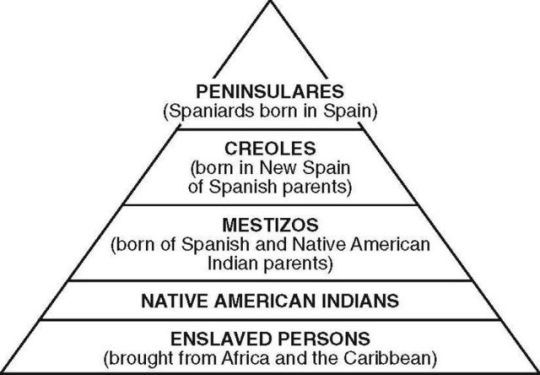
Before we left town, we also interviewed Chucho and asked what he knew and how he felt about la Malinche. He launched into a very accurate historical account of her role in the conquest, halfheartedly echoed the most common sentiment in Mexico about her role as a traitor, and then also told us that his friends had seen her. Kids have a unique reason to be afraid of La Llorona as she has been damned to wander in search of her kids after having drowned them in the river, so parents often warn their kids about playing near rivers at night telling them that La Llorona will snatch them up. Chucho told us that he had never seen her personally, but he’d heard many accounts of people seeing a woman wandering the riverbanks, half of her face was rotted, falling apart, burned, and the the other half still beautiful.
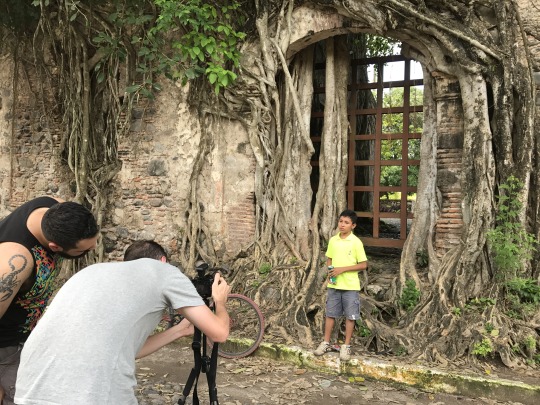
We said goodbye to Chucho, and he told us that if we ever find ourselves in La Antigua, to ask for “our best friend, Chucho,” and someone will tell us where to find him.

That kid’s gonna be president one day, or at least mayor.
After a short drive, we entered the gorgeous mountainous city of Xalapa where Roberto burned up his clutch navigating the steep winding and narrow city streets, especially on the driveway to our home for a night.
The home is owned by a family with many historical connections to the city. It was home to one of the archaeologists who founded the regional anthropological Xalapa museum, and also to an former professor and artist whose paintings covered the walls of the ornate home. Books lined almost every wall and in the back was a lush garden that overlooked the city.
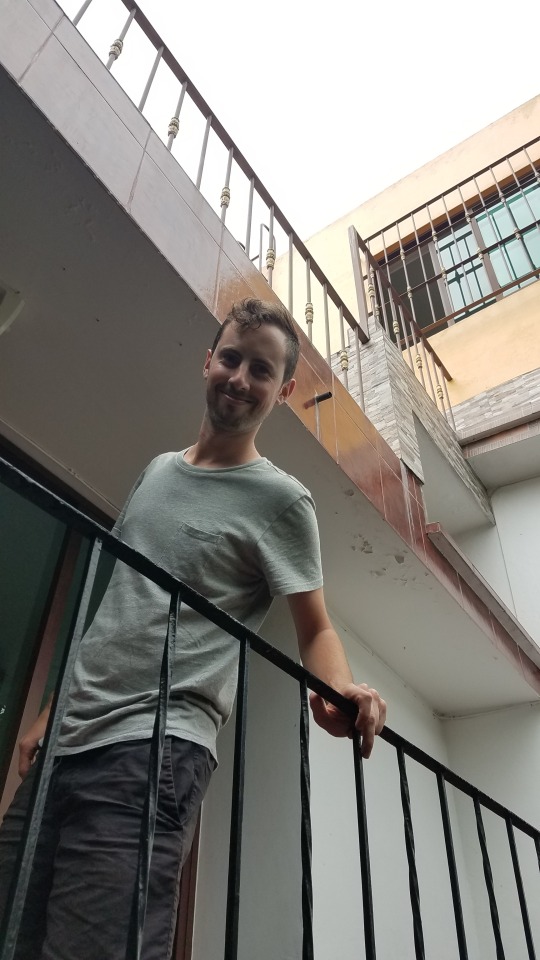




On our way out to wander downtown a kind neighbor gave us a ride and we walked around the cobbled streets where we checked out the murals of the municipal palace, sampled some esquites and dorilocos, before we found a woman selling homemade food on the street and took a seat on stools in front of her as we ate and conversed with her and her husband. Everything was delicious and it was awesome to have had such an intimate eating experience.



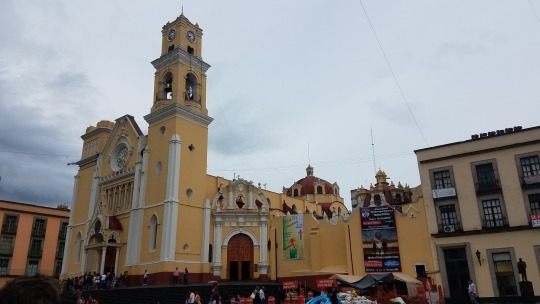



The plaza there gave us a great vantage point to view the mountains, especially La Malinche, an active volcano and one of the tallest peaks in the Americas. The entire top half of the mountain was covered by the clouds so we couldn’t appreciate the size, but hoped tomorrow would be clearer.



We ended the night at Cantina Submarino, a post revolutionary joint that was now a trendy college hangout spot that never gave up its grit.
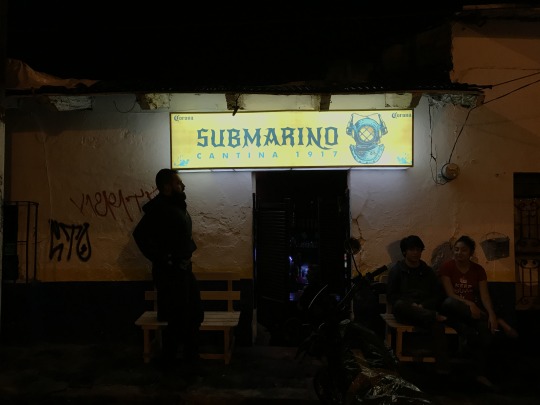
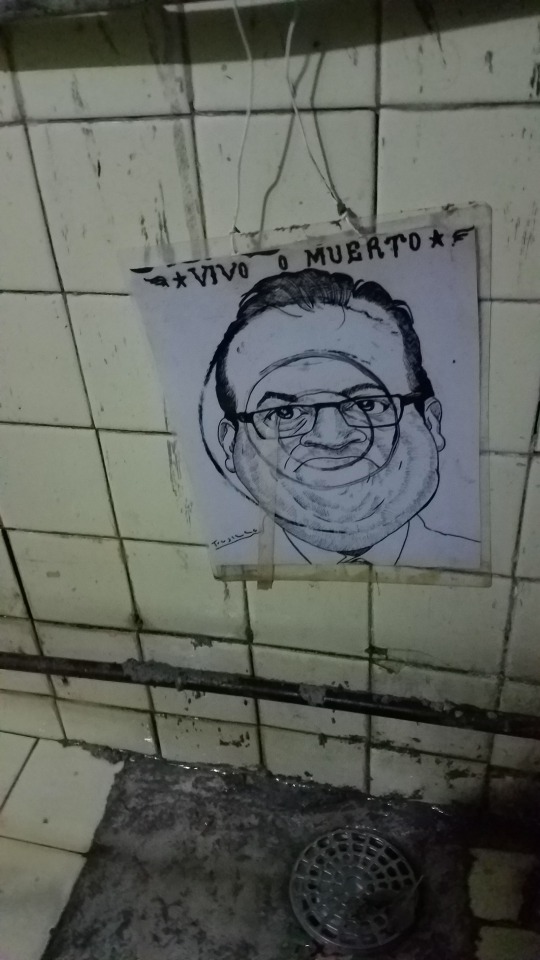
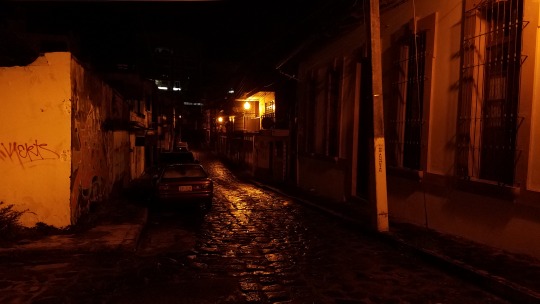
On our way back home, we hit up a hot dog joint where the owners from Sinaloa made their hot dogs in the style of Sinaloa: inside the massive bun were squares of manchego cheese folded inside slices of cured ham, a hot dog wrapped in bacon, a smear of mayo, cream cheese, diced onions, tomatoes, a healthy layer of guac to cement it all into place, ketchup, mustard, bbq sauce, parmesan cheese, and a mountain of caramelized onions to top it all off.
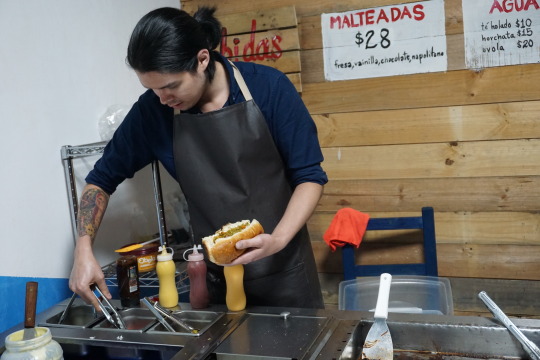

I think it’s safe to say, we’re not going to starve anytime soon.
3 notes
·
View notes
Text
Day 1 - Lizard Fish and Giant Heads

We arrived in beautiful and balmy Villahermosa on Monday night. We were too tired to check out the food cart outside the neighborhood so we passed out and woke to a chorus of tropical birds.
The main event of the day was to check out the Parque Museo de la Venta - a biological preserve where many Olmec artifacts recovered from ancient ruins in the Venta site now call home. Amid the tangle of vines and the free roaming rainforest creatures, we got to check out several of the iconic giant heads the Olmec civilization was known for carving. These and the other stone artifacts were hewn out of massive boulders they amazingly transported from sites at least 60 kilometers from their carving sites.


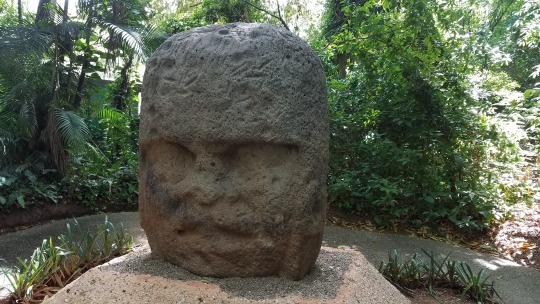
The Olmec civilization (which disappeared in 400 B.C.) is seen as the most distant ancestor to all the Mesoamerican civilizations that met their end after the Spanish conquest, so starting here seems appropriate. The insects were hungry, but we made a good move in buying some bug repellent before going.
We made it through the whole park without getting caught by the temple guards and put the purple parrots back on the board.
Despite Tabasco being the state where La Malinche once called home, and the region where Cortes and his men first defeated the Mayan peoples that held her as a slave, we didn’t get much when we talked to people about her.
Everyone recognized the name, and more or less her role in helping Cortes, but for those whom we spoke to, La Malinche was something they once learned about in grade school and forgot about. Some people reaffirmed her role as a traitor, that’s in large part to the word “malinchista” which still means traitor (usually used for someone who betrays they culture or country).
A woman in a charro and general cowboy supply store told us that we’d have better luck in one of the coastal towns where Cortes passed through because despite Villahermosa being the capital and largest city in Tabasco, it seemed to have hazy at best connections to the memory and legacy of the conquest.

On the other hand, we had amazing results when it came to food. We sampled some grilled alligator gar, affectionately called Pejelagarto (lizard fish) by the locals. It’s a strange river fish with the gruesome head of a fanged reptile.
The veredict:
Greg thought the texture was fine, but the oily and swampy taste was made it so that he could not eat seafood the rest of the day. He poured down as many hot sauces down his throat to cover the stank.
Glen liked the fish part, but he says the lizard part sucked.
I ate the whole fish after Glen and Greg quit one bite in, but having grown up in Florida may have given me an unfair advantage here.
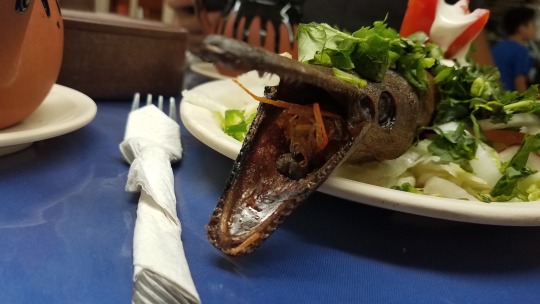

3 notes
·
View notes
Text
Day 6 - Gran Cholula y La Gran Tenochtitlan
We all woke up feeling like crap, Roberto and I felt a little bit more like crap since it was dawning on us that we most likely had contracted a nasty stomach flu.
We would not be stopped, however, since the biggest pyramid in the world was only five short blocks from where we were staying, and it was the next crucial part of our exploration.
Behold: the Great Pyramid of Cholula, a pyramid so big that the Spanish mistook it for a mountain since it had been long since covered in dirt and vegetation. A pyramid so big, you could fit two great pyramids of Giza inside of it.
The original great pyramid is not only enormous, but from the third century B.C.E. up until the ninth century C.E., new indigenous groups built their own complexes on and around it, making it a maze of ancient cities all somehow interlocking, but mostly underground. Only small chunks are visible above ground, but it was difficult to imagine the sprawling structures that lay beneath.

Check it: http://www.thedailybeast.com/mexico-is-hiding-the-worlds-largest-pyramid


We started by entering the tunnels, where a maze of narrow stone passageways took us all through the middle of the complex. Only one route was available, but we could see other paths leading up, down, and to the sides, as far as the eyes could see. Getting lost down here would probably be the absolutely worst, and would most likely end in an Indiana Jones style execution.


Above the mound that is the buried great pyramid, the Spanish (in their classic screw you manner) built a catholic church that overlooked the ancient city.
The plaque in front of the church says that the cross that was erected there before the church was built was struck by lightning and destroyed three seperate times. Then they found Nahua idols and snails buried underneath the location of the cross, so they removed them and built the church... then a tremor did a number on it.
The Spanish of Cholula could not take a hint.
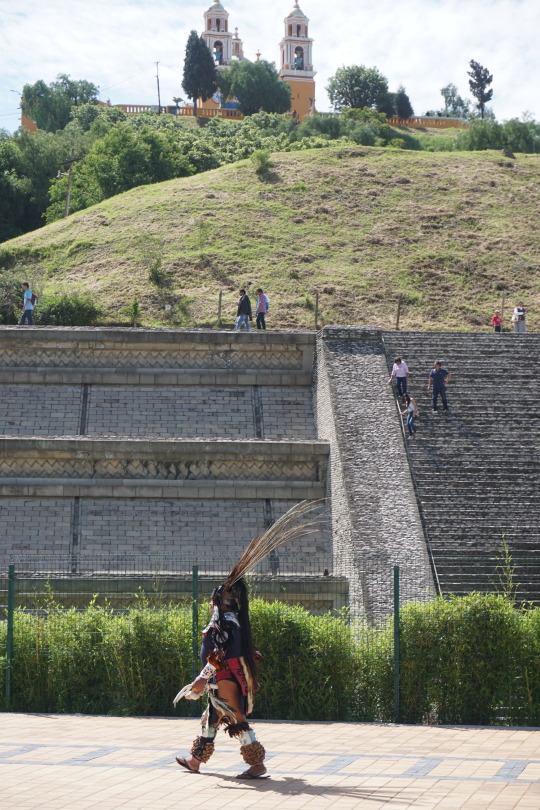


HARDSTYLE PT 2


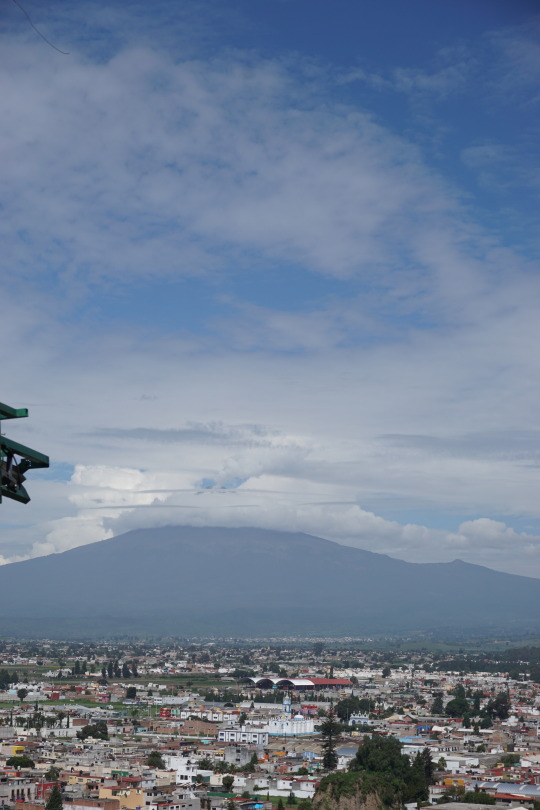
Popocatepetl, another active volcano.


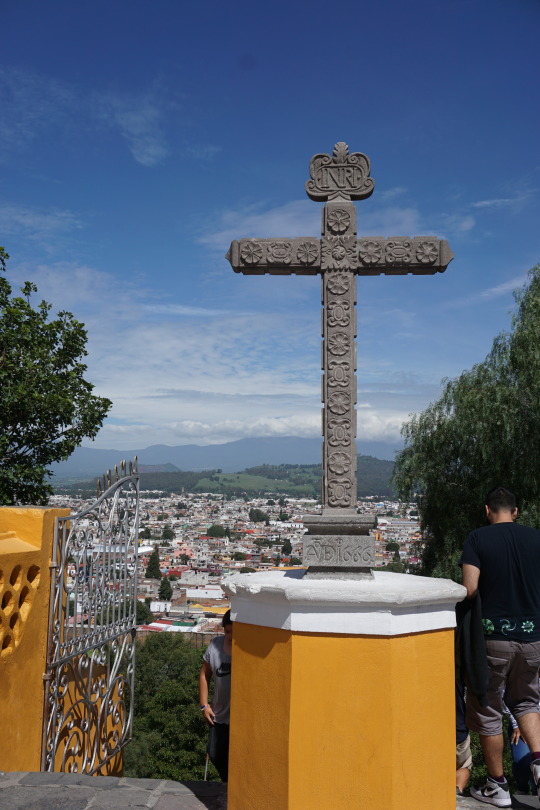




Signs around the ruins reminded visitors of the dark chapter of the conquest that played out in this very location.
After allying with the Tlaxcalans, Cortes, la Malinche, and the rest of his posse grew closer to Tenochtitlan. Emperor Moctezuma, it is said, fearing their approach, devised a cunning plan. Either it was to charm the pants of the Spanish, or to murder them in cold blood. Historians are torn on much of this, but this is certain: the conquistadors were invited to feast in Cholula, the most powerful allied city-state of the Aztec Empire. The Tlaxcalans who followed Cortes were not welcome since they were enemies of the Aztec, and were forced to sleep in the outskirts while the Cholulans made merriment with the Spanish guests.
This much is also true: Cortes ordered the slaughter of the people of Cholula. He believed they had walked into a trap and believed he was right to preemptively strike before he and his party were killed.

Some accounts say that as La Malinche was strolling around the party, an old woman pulled her aside. The old woman explained that she wanted her to be a bride for his son since she saw that she was powerful, had influence, and had great beauty. She warned Malinche that the Cholulans were planning an ambush and that if she wanted to live, she should come with the old woman to safety. La Malinche, it was said, thanked her, told her she needed to grab her belongings, then ran and told Cortes who angered, ordered the massacre.
This account, as most accounts of La Malinche, comes from the Spanish themselves, and historians believe is a convenient way to justify the brutality of Cortes. Others believe Cortes did this to strike fear into the heart of the Aztec emperor, a warning shot.
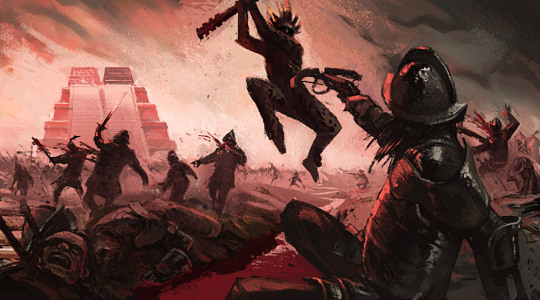
What is important to our exploration is the role of La Malinche in all of this. It is written in many accounts that she detested the practice of human sacrifice and attempted to persuade natives to Catholicism in an attempt to save their lives, while attempting to preserve much of their culture and traditions in the process. She must have known of the brutality of the Spanish. It would be difficult to imagine La Malinche consenting to the slaughter of the Cholulans, even if they were allied to the Aztec, since much of her actions suggest a constant effort to make peace, negotiate to reduce casualties, and bridge misunderstandings between the Spanish and the city-states that marveled at the unfolding events and wondered what role they would play in the aftermath.
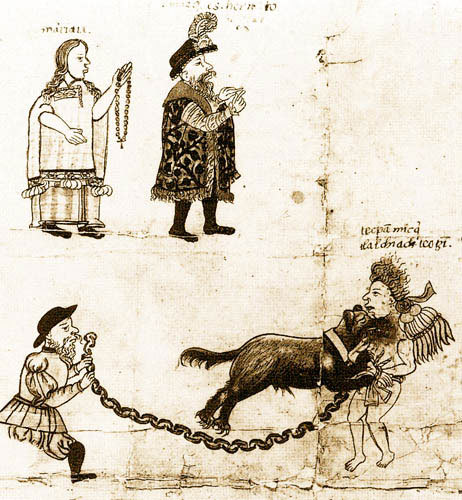
Not even La Malinche could have known what would happen after the mighty Aztec fell.
After exploring the pyramid and church we went back to get another Cemita at Lupita’s and sampled some grasshoppers along the way.
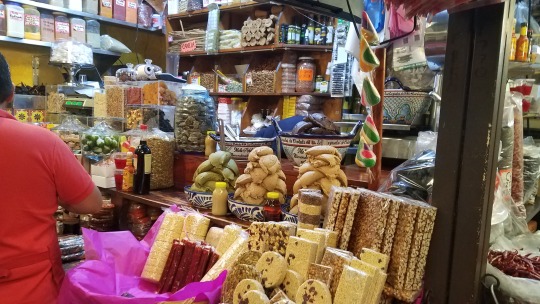

We made out way towards Mexico City, and the landscape once more changed to green and lush. The transition of the landscape defied our expectations. I expected a more arid rocky landscape, in fact, up until we entered the city limits it was green forest, rolling hills, and mountains covered in trees.
Once we made it into the urban sprawl, we arrived at Coyoacan, a popular neighborhood with a unique history and unpacked at the AirBnb we’d stay at the longest.
I walked to get medicine and saw this gem of a street vendor


The evening brought a massive downpour.
Glen and Greg enjoyed exploring the neighborhood that evening while Roberto and I moaned and shivered from our respective beds, still feeling the wrath of the wicked lizard fish.
When the boys got back we ended up watching Game of Thrones which was a good choice since Mexico lost to Jamaica in the Gold Cup semis.
They said that Mexico City was different than what they’d expected. It was cold, rainy, green, and lush. There was a balance of historic and trendy stores everywhere, the streets were packed with families and kids, and there were plazas and squares at every turn where folks gathered and strolled by monuments of incredible historical significance.
I’ll take their word for it.
2 notes
·
View notes
Text
Day 5 - We Climb a Very Tall Volcano
We woke up early, and made a beeline to the Malinche volcano.
I felt myself getting sick, my throat was hurting and I had some fever the night before. Still I didn’t want to bungle the hike, so in order to get my super energy, I bought a tamal form a woman who was wheeling a cart on the side of the road. My companions opted out.
To my surprise, I was getting a fabled “torta de tamal,” un unnecessary starch monster where they stuff a tamal inside a baguette. I picked at the tamal inside and carried around the bread with me, a reminder that I failed to consume the beast.

We drove through small towns, saw people riding donkeys down the small streets, saw people jogging, saying hello, and gathering at the town general stores and watering holes. Everyone was kind and helpful and helped guide us to the base camp.
The base camp was fairly high up. Roberto put his clutch to work again, navigating the steep slopes. The air felt thin at the base camp, and it was as far as we could go by car. There, perched on the side of the volcano, was Don Julio, a traditional restaurant that served up a great breakfast and we fueled up with some delicious cafe de olla.
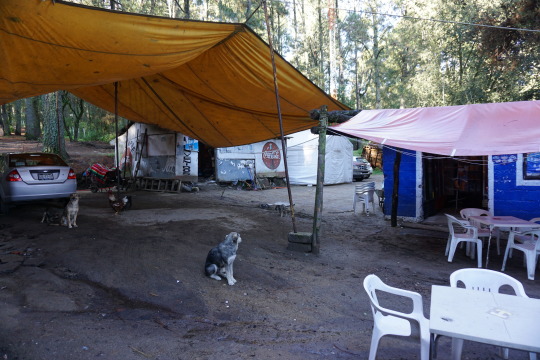
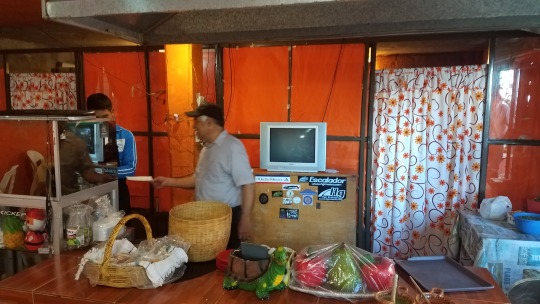

Puppies littered the base camp and sat next to us as we ate, breaking our hearts. Greg and I snuck scraps of food to them under the table.

We were ready to climb! Or so we thought. Roberto said “I’m good right here,” and waited for us at base camp in the car. Glen, Greg, and I started by jogging up to warm ourselves since the air was cold and our limbs needed some blood pumping. We needed to look cool for Roberto, after all, but in our foolishness, we were winded after a ten second jog and it took me about five minutes to catch my breath with the ever decreasing quantity of oxygen.
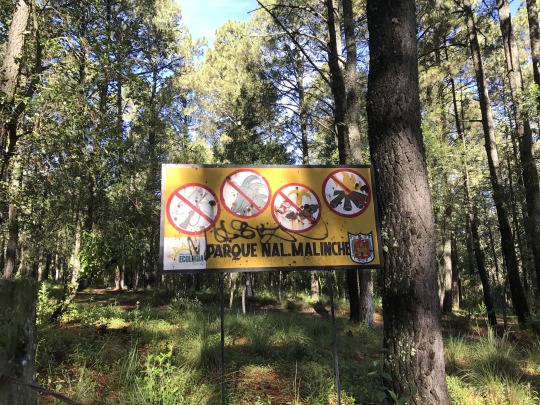


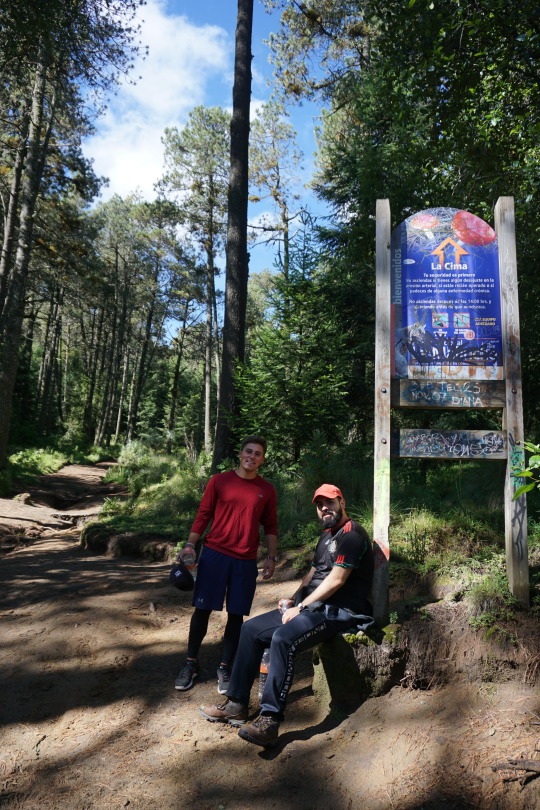
I almost quit several times. I’d like to blame it all on the sickness, but I also know my condition has not been tested like this in a while. I stopped to rest while Glen and Greg pushed ahead, but a surge of energy allowed me to push forward in an attempt to catch up.




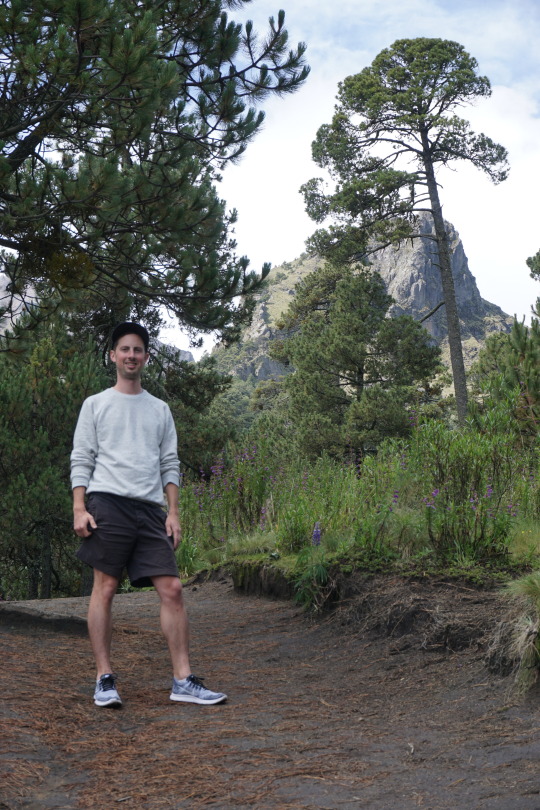

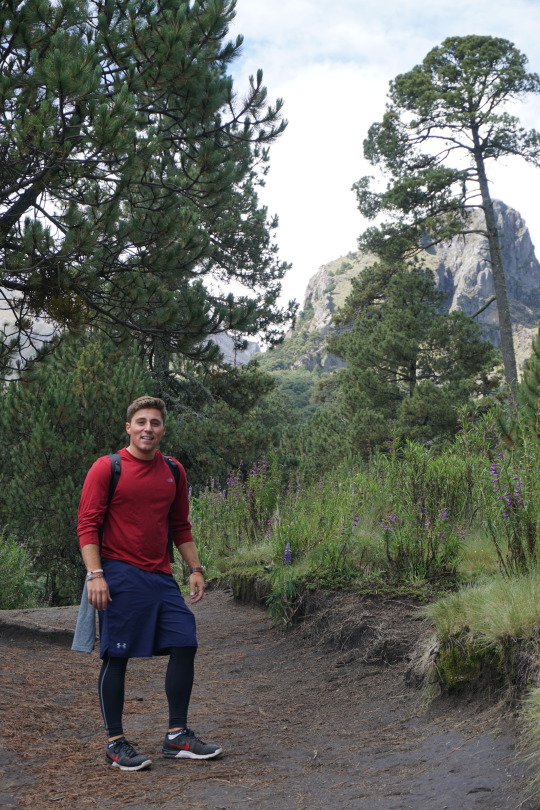
These are some lovely pictures of Glen and Greg enjoying the view at the top while I was laying on my water bottle dying in a ditch below.
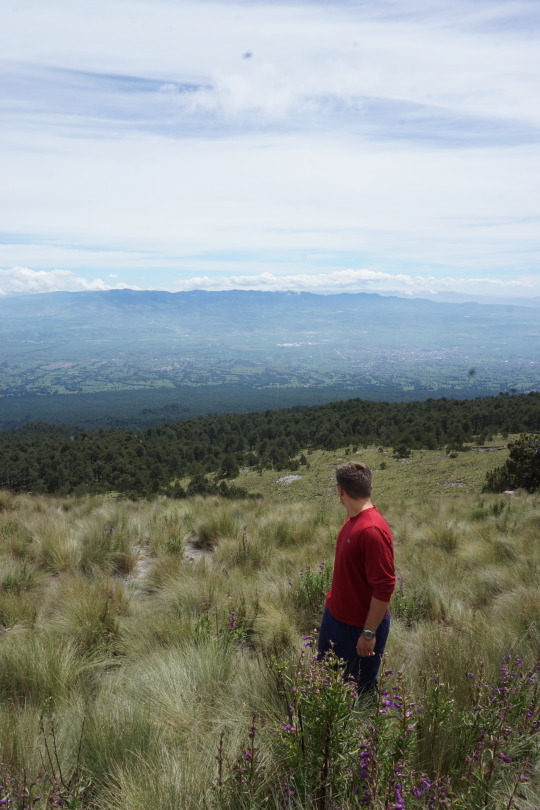
And this is probably the moment when Greg spotted me clearing the tree line, staggering like a broken man towards them, fueled only by a stubborn refusal to die before I finally try some legendary Mexico City pastor.

And this is us, happy and reunited at the top.
We considered climbing the rest of the way to the final peak that rose before us, but the loose rocks and steep slopes would have cost us at least a few more hours, time we would lose in getting to beautiful Cholula, so we were satisfied with our progress and bent the knee to La Malinche. We ran down the green slopes of the trail feasting on the air that grew thicker as we descended.
On our way down we interviewed at least twenty people about what they know/think about La Malinche. To our surprise, nobody could tell us anything about her, and if they did have a vague recollection about her and her role in the conquest they felt uncomfortable being on video sharing what they did know. Here we were, climbing La Malinche, and nobody, none of the incredibly diverse groups of people we passed, could tell us a thing about the actual La Malinche :(
It looks like tracking La Malinche’s legacy and influence on Mexican culture will be more elusive than we thought.

Exhausted and aching, we drove to Cholula where we settled in, walked around the beautiful squares and markets, and were blown away by the Cemitas at Lupita’s Cemitas. We walked around the rest of the marketplace, ate pomegranate, tunas (prickly pear cactus fruit), then finished off at the La Casa de Frida restaurant where we sampled local specialties.







Feeling sick to our stomachs and with increasing fever and headache pain, Roberto and I went back home early while Greg and Greg pressed on and explored the town at night. We reasoned that it was probably the pejelagarto that did us in (maybe I shouldn’t have kissed it either).


The next day, we’d explore the legacy of Cholula in the conquest, a site that was once a major ancient city, and the somber location of the bloodiest massacre of the conquest.
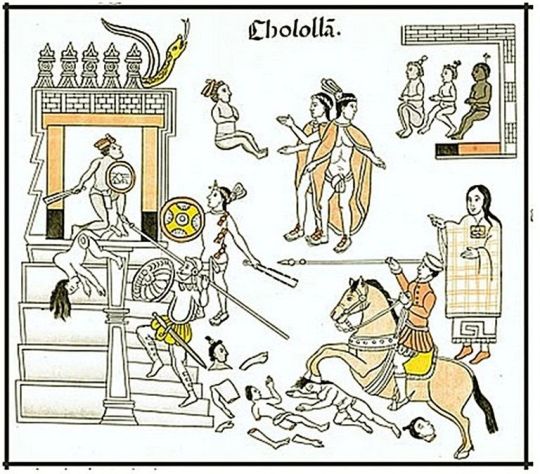
2 notes
·
View notes